|
The human gut is teeming with a diverse array of bacteria collectively known as the gut microbiota. Among its many functions, one of the most vital is colonization resistance—the ability to prevent harmful pathogens from taking up residence in the gut and causing disease. However, understanding which microbiota communities are protective and which allow pathogens to thrive has long been a challenge. In a groundbreaking study led by Spragge et al., researchers shed light on the complex dynamics of gut microbiota and their role in colonization resistance against two significant bacterial pathogens: Klebsiella pneumoniae and Salmonella enterica serovar Typhimurium. Their findings, published in Science, unveil the critical importance of microbiome diversity in safeguarding against pathogenic invasion. Traditionally, it was believed that certain individual bacterial species might confer colonization resistance. However, Spragge et al. discovered that the true protective power lies in the collective diversity of the microbiota. They conducted meticulous experiments both in vitro and in gnotobiotic mice (mice that have been raised in a controlled environment where the microbial composition of their gut is precisely known and controlled), evaluating the ability of single bacterial species and increasingly diverse microbiota communities to resist pathogen colonization. Surprisingly, the researchers found that single species alone provided limited protection against the pathogens. It was only when these species were combined into diverse communities consisting of up to 50 different species that colonization resistance was significantly enhanced. This underscores the importance of ecological diversity in promoting gut health. Moreover, the study identified certain key species within these diverse communities that played a pivotal role in bolstering colonization resistance, even though they offered little protection on their own. These key species acted by consuming nutrients required by the pathogens, thereby depriving them of essential resources for growth and establishment in the host. Importantly, Spragge et al. demonstrated that microbiome diversity not only increases the probability of protection against pathogens but also enhances the overlap in nutrient utilization profiles between the microbiota community and the pathogen. This nutrient blocking mechanism serves as a potent defense strategy against pathogenic invasion. The implications of these findings are profound. They provide compelling evidence for the health benefits of a diverse gut microbiome and offer insights into the rational design of pathogen-resistant microbiota communities. By harnessing the protective power of microbiome diversity, we may pave the way for innovative strategies to combat infectious diseases and promote overall gut health. In conclusion, Spragge et al.'s study unveils the intricate interplay between microbiome diversity and colonization resistance, highlighting the collective strength of diverse bacterial communities in defending against pathogenic threats. This research not only expands our understanding of gut microbiota dynamics but also holds promise for the development of novel therapeutics aimed at fortifying the body's natural defenses against infections. referencesSpragge, Frances, et al. “Microbiome Diversity Protects against Pathogens by Nutrient Blocking.” Science, vol. 382, no. 6676, 15 Dec. 2023, https://doi.org/10.1126/science.adj3502.
0 Comments
In recent years, researchers have uncovered a surprising trend in human physiology: a decline in body temperature over the past two centuries. Contrary to the long-standing belief that the normal body temperature is 37°C (98.6°F), studies spanning multiple cohorts and time periods have revealed a consistent decrease in average body temperature, suggesting a real physiological change rather than a mere artifact of measurement bias. A groundbreaking study analyzed data from three cohorts spanning 157 years (over 600,000 data inputs), including Union Army Veterans of the Civil War, the National Health and Nutrition Examination Survey I, and the Stanford Translational Research Integrated Database Environment. The findings revealed a monotonic decrease in body temperature, with men born in the early 19th century having temperatures 0.59°C higher than men today. A similar decline was observed in women, indicating a significant shift in human physiology over time. While some may attribute these findings to changes in measurement methods or biases, the study's authors argue that the observed drop in temperature reflects real physiological differences. Human body temperature is a crude surrogate for basal metabolic rate. These findings of a decrease in body temperature indicate a decrease in metabolic rate, which is supported in the literature when comparing modern experimental data to those from 1919. Resting metabolic rate, a key component of daily energy expenditure, has been linked to body temperature and longevity. The observed decrease in body temperature suggests a corresponding decline in metabolic rate, independent of changes in body size. This likely has implications for human health and longevity, as metabolic health underlies all vital organ functions. Additionally, changes in ambient temperature and the widespread adoption of heating and cooling systems in modern times may have influenced body temperature trends. Increased time spent in thermoneutral zones, where minimal energy is expended to maintain body temperature, could contribute to the observed decline in resting metabolic rate and body temperature. In conclusion, body temperature has declined, implying lower metabolic rates (since heat is generated as a byproduct of energy production). This declining trend in human body temperature over the past two centuries offers valuable insights into the complex interplay between physiology, environment, and health. As researchers continue to unravel the mysteries of human biology, these findings pave the way for a deeper understanding of our species' evolution and resilience in the face of changing environments and lifestyles. referencesProtsiv, Myroslava, et al. “Decreasing Human Body Temperature in the United States since the Industrial Revolution.” ELife, vol. 9, 7 Jan. 2020, p. e49555, elifesciences.org/articles/49555, https://doi.org/10.7554/eLife.49555.
Dai, Dao-Fu, et al. “Mitochondrial Oxidative Stress in Aging and Healthspan.” Longevity & Healthspan, vol. 3, no. 1, 2014, p. 6, https://doi.org/10.1186/2046-2395-3-6. In our modern world, where convenience often comes at a cost, the prevalence of obesogens – chemicals that disrupt the body's normal metabolism and contribute to weight gain – has emerged as a growing concern. From everyday products to industrial pollutants, obesogens permeate our environment, exerting subtle yet profound effects on our health and well-being. Commonly encountered obesogensAmong the many obesogens encountered in daily life, several stand out for their widespread use and potential health impacts:
Mechanisms of ActionObesogens exert their effects through various mechanisms, including:
Disruption of Metabolism via MitochondriaObesogens, through their pervasive presence in our environment, exert insidious effects on metabolic function, including the intricate workings of mitochondria – the cellular powerhouses responsible for energy production. By disrupting mitochondrial function, obesogens can contribute to metabolic dysregulation and, ultimately, weight gain. Mitochondria play a central role in energy metabolism, converting nutrients into adenosine triphosphate (ATP), the primary source of cellular energy. However, exposure to obesogens can impair mitochondrial function through various mechanisms, including:
The disruption of mitochondrial function by obesogens can have profound implications for metabolic health and contribute to obesity through several pathways:
causative relationship with health conditionsThe impact of obesogens on human health extends beyond weight gain, with associations documented with various health conditions, including:
Additionally, obesogens are highly related to the following health conditions and physiologic imbalances:
Unraveling the Role of Dysfunctional Adipose TissueRelatively little is known about the extent to which obesogen exposure programs dysfunctional adipose tissue that may store but not mobilize fat. However, emerging evidence suggests that obesogens may contribute to adipocyte dysfunction, leading to altered fat storage and metabolism. One potential underlying factor is suboptimal liver detoxification pathways due to inadequate micronutrient cofactors. Inadequate levels of essential micronutrients, such as vitamins and minerals, can impair liver detoxification pathways responsible for metabolizing and eliminating obesogens from the body. As a result, obesogens may accumulate in adipose tissue, disrupting metabolic function and contributing to weight gain. Additionally, micronutrient deficiencies can compromise mitochondrial function, further exacerbating metabolic dysfunction and obesity risk. A Layman's Overview of Obesogens: Redefining the Weight Loss ParadigmIn the quest for weight loss, many of us often find ourselves fixating on calorie counting, fad diets, or intense workout regimens. However, what if I told you that the key to achieving a healthy weight isn't solely about shedding pounds but rather fixing your metabolism? Enter obesogens – a lesser-known yet influential factor in the obesity epidemic. As mentioned, obesogens are chemicals found in our environment, ranging from pesticides and plastics to food additives and personal care products. These substances have the uncanny ability to disrupt our body's natural weight-regulating mechanisms, leading to weight gain and metabolic dysfunction. Instead of solely blaming calories in versus calories out, it's essential to recognize the role obesogens play in shaping our metabolism. The Better Question: Fixing MetabolismRather than constantly asking ourselves, "How do I lose weight?" a more pertinent question would be: "How do I fix my metabolism?" Fixing metabolism involves addressing the root cause of weight gain – obesogen exposure and metabolic disruption. By eliminating or reducing our exposure to obesogens and ensuring our bodies receive essential micronutrients, we can optimize metabolic function and promote overall health. The Two-Fold SolutionTo achieve optimal health and maintain a healthy weight, a two-fold approach is necessary: 1. Reduce Toxin Exposure: Minimize exposure to obesogens by making conscious choices in our daily lives. This includes opting for organic produce, using natural cleaning and personal care products, and avoiding plastic containers and food packaging whenever possible. By participating in a structured evidenced-based detoxification program, we in turn lower our toxic burden, and we can mitigate the adverse effects of obesogens on our metabolism. 2. Consume Micronutrients: Vital micronutrients, such as vitamins and minerals, serve as essential cofactors in metabolic pathways. Ensuring adequate intake of these micronutrients through a balanced diet rich in fruits, vegetables, whole grains, and lean proteins can support optimal metabolic function. Additionally, supplementation may be necessary to address any deficiencies and promote metabolic health. The conventional approach to weight loss often overlooks the critical role obesogens play in metabolic dysfunction. Instead of solely focusing on calorie restriction or intense exercise, shifting our focus to fixing metabolism through toxin reduction and micronutrient consumption offers a more holistic and sustainable solution to achieving optimal health. By addressing the underlying factors contributing to metabolic disruption, we can pave the way for lasting weight management and overall well-being. the harm of environmental toxinsThe disruption of metabolic and mitochondrial function by obesogens represents a significant public health concern, with implications for obesity and metabolic disease. By understanding the mechanisms through which obesogens impair mitochondrial function and contribute to weight gain, researchers can develop targeted interventions to mitigate their adverse effects on metabolic health. Moreover, addressing underlying factors such as suboptimal liver detoxification pathways and micronutrient deficiencies is essential in combating the detrimental impact of obesogens on metabolic function and obesity prevalence. The pervasive presence of obesogens in our environment underscores the need for greater awareness and regulation of these harmful chemicals. By minimizing exposure to obesogens and advocating for safer alternatives, we can mitigate their adverse effects on human health and combat the rising tide of obesity and metabolic disease. As we navigate the complexities of modern living, vigilance and informed consumer choices are essential in safeguarding our health and well-being against the hidden threats of obesogens. Taking Action: The Integral Wellness ProgramFor those seeking tangible solutions to combat the effects of obesogens and improve their overall well-being, the Integral Wellness Program offers a comprehensive approach to optimizing health and vitality. This flagship service provides personalized guidance and support in key areas of movement, nutrition, and lifestyle to directly enhance quality of life. Online/In-Person Guidance One of the standout features of the Integral Wellness Program is its flexibility, offering both online and in-person consultations tailored to individual preferences and needs. Whether you prefer the convenience of virtual sessions or the hands-on approach of in-person coaching, our team of experienced wellness professionals is dedicated to supporting you every step of the way. Movement, Nutrition, and Lifestyle The Integral Wellness Program takes a holistic approach to health, addressing modifiable factors and behaviors in three core areas:
Augmenting the Health Process By participating in the Integral Wellness Program, you'll not only gain valuable knowledge and skills to navigate the challenges of modern living but also receive ongoing support and accountability to stay on track towards your health goals. Through targeted interventions aimed at eliminating obesogen exposure and promoting healthy behaviors, you can unlock your body's full potential and thrive in all aspects of life. The Integral Wellness Program offers a transformative journey towards optimal health and vitality. By prioritizing movement, nutrition, and lifestyle modifications, participants can take proactive steps to combat the effects of obesogens and reclaim control over their well-being. With the guidance and support of our dedicated wellness professionals, you'll embark on a path of self-discovery, empowerment, and lasting transformation. referencesThis article challenges the conventional understanding of heart disease, particularly the widely accepted theory that attributes its cause primarily to events occurring in the coronary arteries. Instead, a paradigm shift is proposed, contending that a deeper understanding of heart disease, encompassing angina, unstable angina, and myocardial infarction (heart attack), necessitates a focus on events within the myocardium, the muscular tissue of the heart. Over the past decades, the prevailing belief in the coronary artery theory has led to costly surgical interventions, widespread medication use with questionable benefits, and dietary recommendations that may exacerbate rather than alleviate the problem. By delving into the precise pathophysiological events that underlie heart attacks, we can uncover alternative approaches to prevention and treatment, such as adopting a "Nourishing Traditions"-style diet and utilizing safe and affordable medicines like g-strophanthin. Furthermore, this shift in perspective prompts us to confront broader issues, including the impact of modern lifestyles on human health, the need for a new medical paradigm, and the importance of ecological consciousness. Ultimately, reexamining the root causes of heart disease offers a pathway to addressing this pervasive health challenge and forging a healthier future for all. The information is summarized based on the work of Dr. Thomas Cowan, vice president of the Physicians Association for Anthroposophical Medicine and is a founding board member of the Weston A. Price Foundation. During his career he has studied and written about many subjects in medicine. These include nutrition, homeopathy, anthroposophical medicine, and herbal medicine. Challenging the Conventional model: Revisiting the Causes of Heart AttacksThe traditional understanding of heart attacks, largely centered on arterial blockage due to plaque buildup, has faced challenges in recent years. Initially, it was believed that blockages in the major coronary arteries led to oxygen deficiency in the heart, causing chest pain (angina) and eventually progressing to a heart attack. This simplistic view prompted invasive procedures like angioplasty, stents, and coronary bypass surgery as standard treatments. However, clinical observations and research findings have cast doubts on this approach. Anecdotal evidence (admittedly low quality evidence) from a trial in rural Alabama revealed surprising outcomes among individuals with single artery blockages. Contrary to expectations, less than 10% of those who experienced heart attacks did so in the region of the heart supplied by the blocked artery. Similarly, a comprehensive study conducted by the Mayo Clinic highlighted the limited efficacy of bypass surgery in preventing future heart attacks. While the procedure offered relief from chest pain, it did not significantly reduce the risk of subsequent heart events, except in high-risk patients. Contrary to popular belief, blockages exceeding 90% are often compensated for by collateral blood vessels, which develop over time to ensure uninterrupted blood flow to the heart. This extensive network of collateral vessels serves as a natural bypass system, mitigating the impact of arterial blockages on blood circulation. However, diagnostic procedures like coronary angiograms, which rely on injecting heavy dye into the arteries, often fail to accurately assess the extent of blockages and the true blood flow in the heart. As a result, many patients undergo invasive treatments such as bypass surgery, stents, or angioplasty based on misleading information about the severity of their arterial blockages. Moreover, studies have shown that these procedures provide minimal benefit, if any, to patients, particularly those with minimally symptomatic blockages exceeding 90%. Despite the widespread use of these interventions, their efficacy in restoring blood flow and preventing heart attacks remains questionable. These revelations underscore the need for a reevaluation of conventional treatment strategies and a deeper exploration of the underlying mechanisms behind heart attacks. Rather than focusing solely on arterial blockages, a more holistic approach that considers factors beyond plaque buildup may offer greater insights into the prevention and management of heart disease. Beyond the Coronary Artery TheoryThe prevailing focus in cardiology has long been on the stable, progressing plaque within the coronary arteries, deemed responsible for heart attacks. However, recent insights challenge this notion, redirecting attention to the unpredictable nature of unstable plaques. Unlike their calcified counterparts, unstable plaques are soft and prone to rapid evolution, abruptly occluding arteries and triggering downstream oxygen deficits, angina, and ischemia. These vulnerable plaques are believed to be a blend of inflammatory buildup and low-density lipoprotein (LDL), the primary targets of statin drugs. Consequently, the widespread adoption of statin therapy is advocated as a preventive measure against heart attacks, fueled by angiogram studies purportedly showcasing the prevalence of unstable plaques as the leading cause of myocardial infarctions (MIs). Yet, autopsies and pathology studies present a different narrative. Thrombosis, deemed crucial in precipitating MIs, is found in only a fraction of cases upon meticulous examination. Furthermore, measurements of myocardial oxygen levels during MIs reveal no discernible deficit, challenging the conventional understanding of ischemia as the primary mechanism. While thrombosis does occur in conjunction with MIs, its occurrence in less than half of cases underscores the inadequacy of attributing MIs solely to arterial blockages. The timing of thrombosis, often post-MI, begs the question: what precipitated the event in the first place? These inconsistencies underscore the limitations of existing theories surrounding coronary artery involvement in MIs. As the spotlight shifts away from stable plaques, a pressing question emerges: What truly underlies the genesis of heart attacks? Unveiling the Autonomic Symphony: The Heart's Harmonious BalanceAn accurate understanding of myocardial ischemia necessitates consideration of the primary risk factors associated with heart disease, including gender, diabetes, smoking, and chronic psychological stress. Curiously, none of these risk factors directly implicate coronary artery pathology; instead, they impact capillary health or exert indirect effects. Over the past five decades, key medications in cardiology, such as beta-blockers, nitrates, aspirin, and statins, have demonstrated some benefits for heart patients. However, their mechanisms of action must be scrutinized within a comprehensive theory of myocardial ischemia. A groundbreaking revelation in heart disease prevention and treatment stems from the autonomic nervous system's role in ischemia genesis, as illuminated by heart-rate variability monitoring. The autonomic nervous system comprises two branches—the sympathetic and parasympathetic—responsible for regulating physiological responses. Imbalance between these branches emerges as a significant contributor to heart disease. Studies reveal a notable reduction in parasympathetic activity among patients with ischemic heart disease, particularly preceding ischemic events triggered by physical or emotional stressors. Conversely, abrupt increases in sympathetic activity rarely culminate in ischemia without antecedent parasympathetic decline. Notably, women exhibit stronger vagal activity than men, potentially influencing sex-based disparities in MI incidence. Multiple risk factors, including hypertension, smoking, diabetes, and stress, diminish parasympathetic activity, underscoring the pivotal role of the regenerative nervous system in heart health. Conversely, pharmacological interventions like nitrates, aspirin, and statins stimulate parasympathetic mediators, promoting ANS balance. In essence, while traditional risk factors and interventions influence plaque and stenosis development, their paramount impact lies in restoring ANS equilibrium. Thus, understanding the sequence of events leading to myocardial infarction demands a deeper exploration of autonomic nervous system dynamics. The Underlying pathophysiology of Myocardial IschemiaIn the vast majority of cases, the pathology leading to myocardial infarction (MI) begins with a decreased tonic activity of the parasympathetic nervous system (rest and digest), often exacerbated by physical or emotional stressors. This reduction prompts an increase in sympathetic nervous system activity, triggering heightened adrenaline production and directing myocardial cells to break down glucose via aerobic glycolysis, rather than their preferred fuel source of ketones and fatty acids (often explaining why patients report feeling tired before a MI). Remarkably, despite these metabolic shifts, no change in blood flow, as measured by the myocardial cell oxygen level (pO2), occurs. The shift towards glycolysis results in a surge of lactic acid production within myocardial cells, a phenomenon observed in nearly all MIs. This surge, coupled with localized tissue acidosis, impedes calcium entry into cells, compromising their contractility. Consequently, localized edema ensues, leading to hypokinesis—the hallmark of ischemic disease—and eventual tissue necrosis characteristic of an MI. Moreover, the ensuing tissue edema alters arterial hemodynamics, escalating sheer pressure and exacerbating plaque instability. This process elucidates the rupture of unstable plaques and their role in exacerbating arterial blockage during critical, acute scenarios. This explanation accounts for all the observable phenomena associated with heart disease. Understanding the etiology of heart disease holds profound implications beyond academic curiosity. It informs therapeutic strategies aimed at preserving parasympathetic activity, fostering holistic approaches to heart health, and challenging prevailing "civilized" industrial lifestyles. Central to this paradigm shift is the recognition of the vital role played by g-strophanthin—a hormone derived from the strophanthus plant. G-strophanthin is an endogenous hormone made in the adrenal cortex from cholesterol, whose production is inhibited by statin drugs, that does two things that are crucial for heart health and are done by no other medicine. G-strophanthin uniquely stimulates the production of acetylcholine, the primary neurotransmitter of the parasympathetic nervous system, while also converting lactic acid—the metabolic poison implicated in ischemic processes—into pyruvate, a preferred myocardial cell fuel. Perhaps this “magic” is why Chinese medicine practitioners say that the kidneys (i.e., adrenals, where ouabain is made) nourish the heart. Embracing this understanding not only guides therapeutic interventions but also underscores the imperative of dietary modifications. A diet abundant in healthful fats and fat-soluble nutrients, while low in processed carbohydrates and sugars, emerges as a cornerstone of heart health—a departure from the industrialized diets synonymous with modern civilization. In essence, unraveling the metabolic symphony orchestrating myocardial ischemia offers a transformative lens through which to perceive heart disease, fostering a holistic approach that transcends conventional paradigms and embraces the profound interconnectedness of mind, body, and environment. referencesGiorgio Baroldi. The Etiopathogenesis of Coronary Heart Disease. CRC Press EBooks, Informa, 20 Jan. 2004. Accessed 29 Mar. 2024.
Sroka K. On the genesis of myocardial ischemia. Z Kardiol. 2004 Oct;93(10):768-83. doi: 10.1007/s00392-004-0137-6. PMID: 15492892. Helfant, R. H., et al. “Coronary Heart Disease. Differential Hemodynamic, Metabolic, and Electrocardiographic Effects in Subjects with and without Angina Pectoris during Atrial Pacing.” Circulation, vol. 42, no. 4, 1 Oct. 1970, pp. 601–610, www.ncbi.nlm.nih.gov/pubmed/11993303., https://doi.org/10.1161/01.cir.42.4.601. Takase, B., Kurita, A., Noritake, M., Uehata, A., Maruyama, T., Nagayoshi, H., ... & Nakamura, H. (1992). Heart rate variability in patients with diabetes mellitus, ischemic heart disease, and congestive heart failure. Journal of electrocardiology, 25(2), 79-88. Sroka, K., Peimann, C. J., & Seevers, H. (1997). Heart rate variability in myocardial ischemia during daily life. Journal of electrocardiology, 30(1), 45-56. Scheuer, J., & Brachfeld, N. (1966). Coronary insufficiency: relations between hemodynamic, electrical, and biochemical parameters. Circulation Research, 18(2), 178-189. Schmid, P. G., Greif, B. J., Lund, D. D., & Roskoski Jr, R. O. B. E. R. T. (1978). Regional choline acetyltransferase activity in the guinea pig heart. Circulation Research, 42(5), 657-660. Katz, A. M. (1971). Effects of ischemia on the cardiac contractile proteins. Cardiology, 56(1-6), 276-283. Manunta, Paolo, et al. “Endogenous Ouabain in Cardiovascular Function and Disease.” Journal of Hypertension, vol. 27, no. 1, 1 Jan. 2009, pp. 9–18, journals.lww.com/jhypertension/Abstract/2009/01000/Endogenous_ouabain_in_cardiovascular_function_and.3.aspx, https://doi.org/10.1097/HJH.0b013e32831cf2c6. Doepp, Manfred. “May Strophanthin Be a Valuable Cardiac Drug ? .” American Journal of Medical and Clinical Research & Reviews, vol. 2, no. 9, 15 Sept. 2023, pp. 1–6, ajmcrr.com/index.php/pub/article/view/75/74, https://doi.org/10.58372/2835-6276.1069. Accessed 29 Mar. 2024. Thayer, J. F., Yamamoto, S. S., & Brosschot, J. F. (2010). The relationship of autonomic imbalance, heart rate variability and cardiovascular disease risk factors. International journal of cardiology, 141(2), 122-131. Recent breakthrough studies have shone a light on the intriguing link between our microbiome – the diverse community of microorganisms residing in our gut and mouth – and the secret to a longer, healthier life. Scientists have long suspected that our genes, environment, and internal factors like the microbiome play a role in determining how long we live, but the specifics remained elusive. Now, thanks to cutting-edge research, we're getting closer to unraveling the mysteries of longevity. In this groundbreaking exploration, scientists employed a sophisticated approach called Mendelian randomization (MR) to delve into the intricate relationships between the human microbiome and longevity. By analyzing genetic data from large cohorts, they uncovered some compelling associations that shed light on the microbial players in the quest for a longer life. The Gut Chronicles: Microbial Superstars and CulpritsThe gut microbiome, a bustling metropolis of bacteria, has been a focal point in the quest for longevity. The study identified certain gut microbes as potential champions in the battle against aging. Microbial heroes like Coriobacteriaceae, Oxalobacter, and the probiotic Lactobacillus amylovorus were found to be positively linked to increased odds of longevity. On the flip side, a few gut microbes emerged as potential antagonists, with names like Fusobacterium nucleatum, Coprococcus, Streptococcus, Lactobacillus, and Neisseria negatively associated with longevity. These microbial foes might have a role in determining how gracefully we age. Oral Health: More Than Just a Pretty SmileThe study didn't stop at the gut; it extended its gaze to the oral microbiome, a less-explored but equally important realm. The findings suggested a fascinating connection between the oral microbiome and longevity. Specific oral bacteria were identified as potential influencers in the longevity game. Interestingly, the research hinted at a lower gut microbial diversity among centenarians (diversity appears to lower with age), but no significant difference in their oral microbiota. This finding underscores the importance of tracking the movements of these beneficial microbes across different parts of the body for a longer and healthier life. Decoding the Genetic Blueprint for LongevityThe study leveraged Mendelian randomization to unravel the causality between the microbiome and longevity. This approach, using genetic variants as tools, allowed scientists to explore the potential causal links between specific microbial features and the length of our lives. The bidirectional analyses provided a wealth of information, not only pinpointing specific microbes associated with longevity but also revealing the microbial preferences of genetically longevous individuals. For instance, genetic predisposition to longevity correlated with a higher abundance of Prevotella and a lower abundance of Bacteroides, suggesting a potential link between dietary choices and a longer life. Microbes and Diseases: Unraveling the We The study didn't just stop at longevity; it ventured into the realm of diseases. Certain microbes associated with longevity were found to have correlations with specific diseases. For example, Coriobacteriaceae, linked to longevity, was significantly reduced in patients with heart failure, suggesting a potential protective role against cardiovascular diseases. This "microbiota—disease—longevity" axis provides a nuanced understanding of how our microbial companions might influence not only our lifespan but also our susceptibility to various health conditions. What's Next in the Quest for a Longer LifeWhile the study opens exciting new avenues, there are some limitations to consider. The identified causalities didn't all reach statistical significance due to the vast number of microbial features tested. However, the robustness of the findings was supported by the replication of several identified causal links in independent datasets. Moving forward, researchers aim to collect more comprehensive individual-level data, including microbiome profiles, genetics, socio-economic factors, behaviors, and environmental influences. This holistic approach will help tease apart the individual contributions of these factors to longevity. In conclusion, this pioneering study, using Mendelian randomization, has provided us with a roadmap to explore the intricate connections between our microbiome and the quest for a longer, healthier life. As we unlock the secrets hidden in our genes and microbes, we inch closer to personalized approaches for healthy aging and interventions that could extend our time on this planet. referencesLiu, Xiaomin, et al. “Mendelian Randomization Analyses Reveal Causal Relationships between the Human Microbiome and Longevity.” Scientific Reports, vol. 13, no. 1, 29 Mar. 2023, p. 5127, www.nature.com/articles/s41598-023-31115-8, https://doi.org/10.1038/s41598-023-31115-8.
Unveiling the Interplay Between Air Quality and Cardiometabolic Health: A Surprising Connection1/29/2024 In a groundbreaking study, researchers have delved into the intricate relationship between air quality and cardiometabolic health, revealing startling findings that challenge conventional wisdom. Published in Environmental Research, this research sheds light on the impact of air pollutants, even at concentrations below the World Health Organization's (WHO) 2021 guidelines, on various aspects of cardiovascular and metabolic well-being. Key FindingsThe study, conducted over a period of 33 weeks with 82 participants grappling with obesity, examined the associations between air pollutants and cardiometabolic outcomes. Particulate matter emerged as a significant player, demonstrating a strong connection with blood lipids, hormones, and glucose regulation – key markers of cardiometabolic health. Surprisingly, the research also uncovered a potential mitigating factor: diet. The participants' adherence to a Healthy Nordic diet, as measured by the Baltic Sea Diet score, showcased a remarkable ability to modify the impact of air pollution on certain cardiometabolic parameters. Details of the StudyThe study utilized linear mixed-effects models to analyze data gathered during a weight loss and weight loss maintenance intervention. The results revealed 17 significant associations between various air pollutants and 10 distinct cardiometabolic outcomes. The focus was primarily on blood lipids, hormones, and glucose regulation, providing a comprehensive understanding of the multifaceted effects of air pollution. Interestingly, the Baltic Sea Diet score did not appear to mediate the association between air pollution and cardiometabolic outcomes. However, the diet quality factor emerged as a key player in modifying the impact of particulate matter (PM2.5) on total cholesterol. Furthermore, it influenced the associations of nitrogen dioxide (NO) and ozone (O3) with ghrelin, a hormone associated with appetite regulation. ReferencesHealy, Darren R., et al. “Associations of Low Levels of Air Pollution with Cardiometabolic Outcomes and the Role of Diet Quality in Individuals with Obesity.” Environmental Research, vol. 242, 1 Feb. 2024, p. 117637, www.sciencedirect.com/science/article/pii/S0013935123024416, https://doi.org/10.1016/j.envres.2023.117637.
Navigating Hormesis: Embracing the Balance Between Stress and Strength for Optimal Health12/21/2023 In the intricate dance of biological responses to stress, hormesis emerges as a captivating phenomenon, challenging conventional notions of dose-response relationships. This blog post delves into the fascinating world of hormesis, where the subtle interplay between stressors and adaptive responses shapes our understanding of health and resilience. The Hormetic Curve: Unveiling the U-Shaped StoryExplore the dynamics of hormesis through the lens of a U-shaped or J-shaped curve, where low doses of stressors trigger beneficial responses while high doses lead to toxicity. Understand how this nonlinear relationship challenges traditional toxicological paradigms. Small Doses, Big Impact: Hormetic Responses UnveiledDelve into real-world examples of hormetic responses, from the beneficial effects of low-dose radiation to the adaptive mechanisms activated by moderate exercise. Learn how these responses stimulate resilience, adaptation, and overall well-being. Hormesis in Toxicology: Redefining Risk AssessmentUnravel the complexities of hormesis in toxicology, where the concept challenges established risk assessment practices. Discover how hormesis introduces a nuanced understanding of dose-dependent effects, prompting a reevaluation of regulatory frameworks. Hormesis and Adaptive Learning: "What Doesn't Kill You Makes You Stronger"Connect the dots between hormesis and the age-old adage, "What doesn't kill you makes you stronger." Explore how the hormetic principle aligns with the idea that controlled exposure to stressors can lead to adaptive learning, fostering strength and resilience. Balancing Act: The Importance of ModerationEmphasize the crucial role of balance and moderation in hormesis. Uncover the delicate equilibrium required for stressors to act as catalysts for positive adaptation without tipping into harmful territory. From Sirtuins to Telomeres: Hormesis at the Cellular LevelJourney into the cellular realm and discover how hormesis influences sirtuins, telomeres, and other cellular processes. Explore the implications for cellular repair, mitochondrial function, and the potential impact on longevity. Practical Insights: Applying Hormesis in Everyday LifeGain practical insights into how hormesis can be applied in daily life. Explore lifestyle choices, dietary considerations, and stress management techniques that harness the power of hormetic responses for enhanced well-being. Embark on a journey of discovery as we unravel the layers of hormesis, revealing its impact on biology, health, and our quest for a balanced and resilient life. Embrace the science behind stress and strength, and learn how hormesis invites us to rethink our approach to well-being. We’ve built an entire economy, not just in the United States but the entire Western civilization, on healthcare. For thousands of years, real control over populations has been around their food. Today, with billions of souls on the planet, controlling food has become a massive business and a means of ultimate political control. Between 1982 and 2000, something changed in our environment, overwhelming the immune system of the population. Diseases in different organ systems started going epidemic simultaneously, challenging the notion of a thousand different diseases.
In the late 1800s, we changed the way we farmed, leading to a disrespect for crop rotation and soil health. This disrespect for soil health resulted in the Dust Bowl of the 1920s and 30s, pushing us to outsource our food production and rely on imported food. After World War II, with a surplus of petroleum, we started producing chemical-based fertilizers, leading to the Green Revolution. While plants turned green due to nitrogen and phosphorus, they lacked essential nutrients and medicine. This deficiency weakened plants, making them susceptible to diseases and pests. The chemical industry introduced pesticides and herbicides (including #Glyphosate), creating a co-dependent relationship between farmers and chemical solutions. Similarly, in healthcare, we’ve become dependent on drugs to manage symptoms, creating a cycle of side effects and more medications. The epidemic rise in diseases like autism, Alzheimer’s, Parkinson’s, and autoimmune disorders signals a deeper problem, challenging our understanding of the root cause of diseases. It’s time to reconsider our approach to health, starting with understanding the importance of soil health and nutrition. Just as respecting soil is crucial for healthy crops, prioritizing our body’s nutritional needs is fundamental for overall well-being. Let’s shift our focus from symptom management to addressing the root cause, promoting a holistic approach to health. Zach Bush, MD is triple board-certified physician specializing in internal medicine, endocrinology and hospice care. He is the founder of Seraphic Group, an organization devoted to developing root-cause solutions for human and ecological health in the sectors of big farming, big pharma, and Western Medicine at large. And he is also the founder of Farmers Footprint https://farmersfootprint.us/, a non-profit coalition of farmers, educators, doctors, scientists, and business leaders aiming to expose the deleterious human and environmental impacts of chemical farming and pesticide reliance - while simultaneously offering a path forward through regenerative agricultural practices. Research on omega–3 fatty acids has expanded enormously over the past 10 years. Beginning with the mid 1970s, most of the research focused on the role of omega–3fatty acids in the secondary prevention of cardiovascular disease. Epidemiological observations, animal studies, clinical intervention studies, and studies at the molecular level firmly established the importance of omega–3 fatty acids, in the prevention and management of cardiovascular disease. Furthermore, studies on the mechanisms and the need to balance the omega–6 to the omega–3 ratio for homeostasis and normal development have been carried out at the molecular level and in transgenic animals using lipidomics and informatics. It is now accepted that docosahexaenoic acid (DHA) and arachidonic acid (AA) are essential for brain development during pregnancy, lactation and throughout the life cycle. Recently, studies on brain and retinal function as well as mental health have dominated the field. That DHA can affect brain function and behavior is no longer controversial. The studies on age-related macular degeneration (AMD) given supplemental DHA have revealed significant interactions between DHA and genetic variants. In animal experiments, deficiencies in DHA show impairments in cognitive development correctable by its repletion. Furthermore, the consumption of DHA or fish oil by humans slows cognitive decline in the aged and in subjects with early Alzheimer’s disease (AD) and promotes mental development in infants. Over 60 countries worldwide have supplemented infant formula with DHA and AA, yet the Food and Nutrition Board of the Institute of Medicine has not determined the nutritional requirement of DHA.
There have been a number of volumes in the series of the World Review of Nutrition and Dietetics (WRND) on various aspects of omega–6 and omega–3 essential fatty acids (EFA) beginning with Volume 66: Health Effects of Omega–3 Polyunsaturated Fatty Acids in Sea foods, published in 1991, which truly established the field. It was followed by Volume 75: Fatty Acids and Lipids: Biological Aspects, published in 1994. Volume 83: The Return of Omega-3 Fatty Acids into the Food Supply I. Land-Based Animal Food Products and Their Health Effects, published in 1998. Volume 88: Fatty Acids and Lipids – New Findings, published in 2001. Volume 92: Omega–6/Omega–3 Essential Fatty Acid Ratio: The Scientific Evidence, published in 2003. The present volume 99: Omega–3 Fatty Acids, the Brain and Retina is the sixth in the series, published in 2008. The volume begins with the paper by Artemis P. Simopoulos on Omega–6/Omega–3Essential Fatty Acids: Biological Effects’ which sets the stage for what follows. Dr. Simopoulos emphasizes the changes that have taken place in the food supply that led to high intake of omega–6 and low intake of omega–3 fatty acids, particularly the last 50 years, and the biological effects of the resulting imbalanced omega–6/omega–3 ratio. Major advances have taken place in the concepts of inflammation and proresolution of new lipid mediators, lipoxins, resolvins and protectins discovered by using new approaches mainly lipidomics and informatics. Finally the paper provides an overview of mental illness and eye disease that are presented in detail in the papers that follow. It is widely recognized that radiation exposures such as X-rays and gamma radiation can increase the risk of cancer in humans and animals. These types of radiation are referred to as ionizing radiation (Ionization energy is defined as the minimum amount of energy required to remove an electron from an atom or molecule in the gaseous state). This is different from nonionizing radiation, which includes ultraviolet (UV), visible light, extremely low frequency radiation (ELF), and radiofrequency or microwave (RF) radiation. Conventionally, researchers believed that nonionizing radiation is not harmful or carcinogenic, despite evidence surfacing regarding the relationship between UV radiation and skin cancer. Research evaluating the exposure to RF radiation was conducted primarily by military agencies. Due to the advent and use of cellular telephone systems, which involve widespread public exposures, reevaluation of exposure risk has become urgent. Four types of physiological effects has been observed by researched in multiple studies:
These findings suggest that exposure to RF radiation, including from devices such as microwave ovens, are potentially carcinogenic and have other health effects. An important point to consider is that low dose radiation exposure over time has damaging effects, rather than one large exposure to radiation. Alternatives to Microwaves Rather than using a microwave, consider using a stove or convection oven. These methods take a bit more time, but it is well worth it! Consider using headphones to talk on cell phones rather than placing the device directly to your head. If possible, request to avoid airport scanners by opting for a pat-down. Lastly, try to reduce overall radiation exposure over time. References Goldsmith, J. (1997). Epidemiologic Evidence Relevant to Radar (Microwave) Effects. Environmental Health Perspectives, 105, 1579. https://doi.org/10.2307/3433674
Dr. Joe Dispenza is teaching the world how to empower and heal our mind through meditation and mindfulness. His studies have proven that when well practiced these tools can put us on the path to understanding and breaking deep-rooted bad habits and even heal illnesses. The author of Becoming Supernatural explains how to stop your mind from controlling you on this episode of Impact Theory with Tom Bilyeu.
Transcript: It's a scientific fact that the hormones of stress downregulate genes and create disease. Long-term effects. Human beings because of the size of the neocortex, we can turn on the stress response just by thought alone. As I think about our problems and turn on those chemicals. That means then our thoughts could make us sick. So if it's possible, that our thoughts could make us sick then it is possible then our thoughts could make us well? The answer is absolutely yes. Everybody welcome to Impact Theory. Our goal with this show and company is to introduce you to the people and ideas that will help you actually execute on your dreams. Alright today's guest is a New York Times bestselling author and one of the most sought-after speakers in the world. He's lectured and given advanced workshops in more than 30 countries across five continents all with the aim of helping people better understand and unlock the power of their mind. His expertise is the intersection of the fields of neuroscience, epigenetics and quantum physics and he's partnered with other scientists across multiple disciplines to perform extensive research on the effects of meditation using advanced technologies such as epigenetic testing brain mapping with EEG s and gas-discharge visualization technology. Through his work he is endeavouring to help advance both the scientific community and the public at large as understanding of mind derived health optimization, a topic he covered extensively in his groundbreaking book, You Are The Placebo. His teaching has had such a profound impact on the way that people perceive a wide range of brain related topics around mindfulness and well-being. [that] He's a faculty member at the quantum University in Hawaii the Omega Institute for holistic studies in New York and the Kerr Paulo Centre for yoga and health in Stockbridge, Massachusetts. He's also an invited chair of the research committee at life University in Atlanta, as well as a corporate consultant where he delivers his lectures and workshops for businesses. So, please help me in welcoming the man who has appeared in such films as Heal, People Versus the State of Illusion and Unleashing Creativity, the author of the recent book Becoming Supernatural, Dr. Joe Dispenza. Thanks for being here. So, diving into your world and how you perceive the sense of self and the way that you marry science to - the way that we form memories the way that we live in a perpetual state of reliving our past and things like that. It's really, really incredible and I want to dive into the whole notion of you sort of being a habitual construct like what? What is that? What is the habit of you? Well a habit is a redundant set of automatic unconscious thoughts, behaviors and emotions that's acquired through repetition. The habit is when you've done done something so many times that your body now knows how to do it better than your mind. So if you think about it, people wake up in the morning, they begin to think about their problems. Those problems are circuits, memories in the brain, each one of those memories are connected to people and things at certain times and places. And, if the brain is a record of the past, the moment they start their day, they're already thinking in the past. Each one of those memories has an emotion. Emotions are the end product of past experiences. So the moment they recall those memories of their problems, they all of a sudden feel unhappy, they feel sad, they feel pain. Now how you think and how you feel creates your state of being. So the person's entire state of being when they start their day is in the past. So what does that mean? The familiar past will sooner or later be predictable future. So, if you believe that your thoughts have something to do with your destiny and you can't think greater than how you feel, or feelings have become the means of thinking, by very definition of emotions you're thinking in the past. And for the most part you're going to keep creating the same life. So then people grab their cell phone they check their WhatsApp. They check their texts. They check their emails. They check Facebook. They take a picture of their feet. They post it on Facebook. They tweet something, they do Instagram. They check the news and now they feel really connected to everything that's known in their life. And then they go through a series of routine behaviors. They get out of bed on the same side. They go to the toilet. They get a cup of coffee. They take a shower, they get dressed, they drive to work the same way. They do the same things. They see the same people, that pushed the same emotional buttons, and that becomes the routine and it becomes like a program. So now they've lost their free will to a program, and there's no unseen hand doing it to them. So when it comes time to change the redundancy of that cycle becomes a subconscious program. So now 95% of who we are by the time we're 35 years old is a memorized set of behaviors, emotional reactions, unconscious habits, hardwired attitudes, beliefs and perceptions that function like a computer program. So then person can say with their five percent of their conscious mind. I want to be healthy. I want to be happy. I want to be free, but the body's on a whole different program. So then how do you begin to make those changes? Well, you have to get beyond the analytical mind because what separates the conscious mind from the subconscious mind is the analytical mind and that's where meditation comes in, because you can teach people through practice how to change their brainwaves, slow them down. And, when they do that properly they do enter the operating system where they can begin to make some really important changes. So most people then wait for crisis or trauma or disease or diagnosis, you know, they wait for loss some tragedy to make up their mind to change and my message is, "Why wait?" You can learn and change in a state of pain and suffering or you can learn and change in a state of joy and inspiration. I think right now the cool thing is that people are waking up. That's really interesting. And where I found the the deepest hooks into how powerful this can be for somebody is when you talk about trauma and you've talked about how people experience a traumatic event, but they then basically rehearse it and how that then has this knock-on effect. So, what is that? Why do people find it so hard to get past trauma? Well, the stronger the emotional reaction you have to some experience in your life, the higher the emotional quotient, the more you pay attention to the cause, and the moment the brain puts all of its attention on the cause, it takes a snapshot and that's called a memory. So long-term memories are created from very highly emotional experiences. So what happens then is that people think neurologically within the circuitry of that experience and they feel chemically within the boundaries of those emotions. And so when you have an emotional reaction to someone or something most people think that they can't control their emotional reaction. Well, it turns out if you allow that emotional reaction, it's called a refractory period to last for hours or days, that's called the mood. I say to someone, "Hey, what's up think?" "I'm in a mood," "Well, why are you in a mood?" "Well I had this thing happen to me five days ago and I'm having one long emotional reaction." If you keep that same emotional reaction going on for weeks or months that's called temperament. Why is he so bitter? I don't know. Let's ask him. Why is he so bitter? "Why are you bitter?" "Well, I had this thing happened to me nine months ago." And if you keep that same emotional reaction going on for years on end that's called a personality trait. And so learning how to shorten your refractory period of emotional reactions is really where that work starts. So then people when they have an event what they do is they keep recalling the event because the emotions of stress hormones the survival emotions are saying pay attention to what happened, because you want to be prepared if it happens again. Turns out most people spend 70% of their life living in survival and living in stress. So they're they're always anticipating the worst-case scenario based on a past experience and they're literally, out of the infinite potentials in the quantum field, they're selecting the worst possible outcome and they're beginning to emotionally embrace it with fear and their conditioning their body into a state of fear. Do that enough times, the body has a panic attack without you. You can't even predict it because it's programmed subconsciously. So then you say to the person, "Why are you this way?" And they'll say, "I am this way because of this event that happened to me 15 or 20 years ago," and what that means from biological standpoint is that they haven't been able to change since that event. So then the emotions from the experience tend to give the body and the brain a rush of energy. So people become addicted to the rush of those emotions and they use the problems and conditions in their life to reaffirm their limitation, so at least they can feel something. So now when it comes time to change you say the person, "Why are you this way?" Well, every time they recall the event they're producing the same chemistry in their brain and body as if the event is occurring, firing and wiring the same circuits and sending the same emotional signature to the body. Well, what's the revelant behind that? Well, your body is the unconscious mind. It doesn't know the difference between the experience that's creating the emotion and the emotion that you're creating by thought alone. So the body's believing it's living in the same past experience 24 hours a day, seven days a week, 365 days a year. And so then when those emotions influence certain thoughts, and they do, and then those thoughts create the same emotions, and those same emotions influence the same thoughts, now the entire person's state of being is in the past. So then the hardest part about change is not making the same choice as you did the day before a period. And the moment you decide to make a different choice get ready because it's going to feel uncomfortable, it's going to feel unfamiliar. So why does it feel so uncomfortable? Is it because of the neurons that fire together wire together? So there's like an easiness to that loop. (Just because, literally, and you've talked very eloquently about this the way that the neurons connect in the brain how rapidly. I've seen you show footage of how rapidly those connections happen, which is pretty incredible." Is that what makes it so discomforting for people? I think that the bigger thing is that as we keep firing and wiring those circuits, they become more hardwired. So there you have a thought and then the program runs but it's the emotion that follows the thought. If you have a fearful thought you're gonna feel anxiety, the moment you feel anxiety your brains checking in with your body and saying, " Yeah, you're pretty anxious." So then you start thinking more corresponding thoughts equaled how you feel. Well, the redundancy of that cycle conditions the body to become the mind. So now when it comes time to change, a person steps into that river of change and they make a different choice in all of a sudden they don't they don't feel the same way. So the body says, "Well, you've been doing this for 35 years." Well, you're gonna just stop feel suffering and stop feeling guilty and stop feeling shameful and you're not gonna complain, or blame, or make excuses, or feel sorry for yourself. The body's in the unknown. So the body says I want to return back to familiar territory. So the body starts influencing the mind then it says, "Start tomorrow, you're too much like your mother. You'll never change. This isn't gonna work for you. This doesn't feel right." And so if you respond to that thought as if it's true, that same thought will lead to the same choice, which will lead to the same behavior, which will create the same experience, which produce the same emotion. I want to talk about that notion. Give me a little more detail. We mean by the body becomes the mind or the unconscious mind. What do you mean by that exactly? Well, those are two different things. Your body is your unconscious mind. In a sense, if you're sitting down and you start thinking about some future worst-case scenario that you're conjuring up in your mind and you begin to feel the emotion of that event, your body doesn't know the difference between the event that's taking place in your world, outer world, and what you're creating by emotion or thought alone. So most people then, they're constantly reaffirming their emotional states. So when it comes time to give up that emotion they can say, "I really want to do it," but really the body is stronger than the mind because it's been conditioned that way. So, the servant now has become the master and the person all of a sudden once they step into that unknown, they'd rather feel guilt and suffering because at least they can predict it. Being in the unknown is a scary place for most people because the unknown is uncertain. People say to me, "Well, I can't predict my future. I'm in the unknown." And I always say, "The best way to predict your future is to create it. Not from the known but from the unknown. What thoughts do you want to fire and wire in your brain? What behaviors do you want to demonstrate in one day? The act of rehearsing mentally, closing your eyes and rehearsing the action. The rehearsing the reaction of what you want. The action of what you want by closing your eyes and mentally rehearsing some action. If you're truly present, the brain does not know the difference between what you're imaging and what you're experiencing in 3D world. So then you begin to install the neurological hardware in your brain to look like the event has already occurred. Now your brain is no longer a record of the past. Now, it's a map to the future. And if you keep doing it, priming it that way, the hardware becomes a software program and who knows you just may start acting like a happy person. And then I think the hardest part is to teach our body emotionally what the future will feel like ahead of the actual experience. So, what does that mean? You can't wait for your success to feel empowered. You can't wait for your wealth to feel abundant. You can't wait for your your new relationship to feel love, or your healing to feel whole. I mean that's the old model of reality of cause and effect, you know waiting for something outside of us to change how we feel inside of us and when we feel better inside of us. We pay attention to whatever caused it. But what that means then is that from the Newtonian world that most people spend their whole life living in lack, waiting for something to change out there. What do you mean the Newtonian world? Newtonian world is all about the predictable. It's all about predicting the future. But the quantum model of reality isn't is about causing an effect. The moment you start feeling abundant and worthy you are generating wealth. The moment you're empowered and feel it, you're beginning to step towards your success the moment. You start feeling whole, your healing begins. And when you love yourself and you love all of life, you'll create an equal. And now you're causing and effect and I think that's that the difference between living as a victim - In your world saying "I am this way because of this person or that thing or this experience. They made me think and feel this way." When you switch that around you become a creator of your world and you start saying, "My thinking and my feeling is changing an outcome in my life." And now that's a whole different game and we start believing more that were creators of reality. So, how do we go from, "Okay, I have this negative emotion. It's controlling my life. It's got me in this cycle of I think about this emotion, which triggers a chemical reaction, which trains my body to feel that way, which makes it easier more likely I will do it again, and so now I'm in this vicious cycle." And it's unconscious right. You said, "Does your thinking create your environment, or does your environment create your thinking," which I thought was really, really interesting. So, how do we then go from that, like mechanistically, to begin this visualization process of something that's empowering, its me in a different state, it's my future self. Is it meditation? What does that look like? If you're not being defined by a vision of the future, then you're left with the old memories of the past and you will be predictable in your life. And, if you wake up in the morning and you're not being defined by a vision in the future as you see the same people and you go to the same places and you do the exact same thing at the exact same time, it's no longer that your personality is creating your personal reality. Now your personal reality is affecting or creating your personality. Your environment is really controlling how you think and feel unconsciously, because every person every thing every place every experience has a neurological network in your brain. Every experience that you have with every person produces an emotion. So some people will use their boss to reaffirm their addiction to judgment. They'll use their enemy to reaffirm their addiction to hatred. They'll use their friends to reaffirm their addiction to suffering. So now they need the outer world to feel something. So, to change them is to be greater than your environment, to be greater than the conditions in your world and the environment is that seductive. So then why is meditation the tool? Well, let's sit down. Let's close our eyes. Let's disconnect from your outer environment. So if you're seeing less things is less stimulation going to your brain if you're playing soft music or you have earplugs in, less sensory information coming to your brain. So you're disconnecting from environment if you can sit your body down and tell it to stay like an animal stay right here. I'm gonna feed you when we're done. You can get up and check your emails. You can do all your texts, but right now you're gonna sit there and obey me. So then, when you do that properly and the you're not eating anything or smelling anything or tasting anything, you're not up experiencing and feeling anything, you would have to agree with me that you're being defined by a thought, right? So when the body wants to go back to its emotional past, and you become aware that your attention is on that emotion, and where you place your attention is where you place your energy, you're siphoning your energy out of the present moment into the past and you become aware of that. And, you settle your body back down in the present moment because it's saying "Well, it's eight o'clock. You normally get upset because you're in traffic around this time and here you are sitting and we're used to feeling anger and you're off schedule. Oh, it's 11 o'clock and usually check your emails and judge everybody." Well, the body is looking for that that predictable chemical state every time you become aware that you're doing that and your body is craving those emotions and you settle it back down into the present moment, you're telling the body it's no longer the mind, that you're the mind. And now your will is getting greater than the program. And if you keep doing this over and over again, over and over again, over and over again, just like training a stallion or a dog, it's just gonna say, "I'm gonna sit." And the moment that happens, when the body's no longer the mind, when it finally surrenders, there's a liberation of energy. We go from particle to wave, from matter to energy, and we free ourselves from the chains of those emotions that keep us in the in the familiar past and we've seen this thousands of times. In fact, we can actually predict it now on a brain scan. That's so interesting. Let's go a little bit harder on metacognition, the notion that you don't have to believe everything you think. I love the way that you talk about that. Hmm. Yeah, and we have a huge frontal lobe. It's 40% of our entire brain, and most people when they have a thought they just think that that's the truth. And, I think one of my greatest realizations in my own journey was just because you have a thought, it doesn't necessarily mean it's true. So if you think 60 to 70 thousand thoughts in one day, and we do, and 90% of those thoughts are the same thoughts as the day before and you believe that your thoughts have something to do with your destiny, your life's not gonna change very much. Because the same thought leads to the same choice, the same choice leads to the same behavior, the same behavior creates the same experience, and the same experience produces the same emotion. And so then, the act of becoming conscious of this process, to begin to become more aware of how you think, how you act, and how you feel, it's called metacognition. And so then, why is that important? Because the more conscious you become of those unconscious states of mind and body, the less likely you're gonna go unconscious during the day. And that thought is not gonna slip by your awareness unchecked. It means to know thyself. And the word meditation means to become familiar with. So as you become familiar with the thoughts the behaviors and the emotions of the old self, you're retiring that old self as you fire and wire new thoughts and condition the body into a new emotional state. If you do that enough times, it'll begin to become familiar to you. So it's so important. Just like a garden, if you're planting a garden, you've got to get rid of the weeds. You got to take the plants from the past year and you got to pull them out. The rocks that sift to the top that are like our emotional blocks, they have to be removed that soil has to be tenderized and broken down. We have to we have to make room to plant the new garden. So primarily, we learn the most about ourselves and others when we're uncomfortable, because the moment you move into that uncomfortable state, normally a program jumps in. When that program jumps in, it's because the person doesn't want to be in the present moment and engage it consciously. So when you teach people how to do that with a meditative process, turns out that when they're in their life, they're less likely to emotionally react. They're less likely to be so rigid and believe the thoughts they were thinking. They're more aware of when they go unconscious back into a habit, and that is what starts the process of change. And, so we have to unlearn before we relearn. We have to break the habit of the old self before we reinvent a new self. We have to pre-synaptic connections and sprout new connections. We have to unfire and unwire and refire and rewire. We have to unmemorize emotions that are stored and then recondition the body that to a new mind into a new emotion. Like the deprogram and reprogram, that's the act, and it's a two-step process. Yeah, I like the way that you call that out as an action. There was another thing that you said that I thought was really powerful, about how insights themselves are essentially inert, they don't do anything. What what then do we do with an insight? How do we take a breakthrough moment and make sure that it's not just a breakthrough moment? Like I guarantee people watching right now are having like a hundred aha moments. For sure, that was definitely the case for me as I was researching you and when you said that I was like and that's the danger that you have the aha and then nothing. Yeah, and it is a danger, because then people will will shrink back into mediocracy and they'll use the insight to excuse them from taking a leap. They'll say, "Yeah, you know, I have a chemical imbalance in my brain. Yeah, my father was really overbearing, he was a perfectionist. That's why I am the way I am." You know people, they come up with stuff to excuse themselves. The insight is actually giving them permission to stay limited. And it's an amazing idea because they'll say to you that they really want to get over their anxiety. But let's ok. Let's take your ex-husband. Let's put him in a straitjacket. Let's duct tape them and shoot them to the moon know what I mean. What are you gonna do now? You still have to make those changes. And so then the person's enemy dies or they're something shifts in their life and that person's gone, they'll find another person to hate. This is just how we function as human beings. We just slide another reason to feel those emotions. So I think I think when people start to understand this, you know, I think knowledge is power. But knowledge about yourself is self empowerment. So how much of this is really learning to just bifurcate the world into (there's) negative emotions that have negative neurochemistry - associated with, and you said that in those states if you're living in a perpetual state of stress hormones and things like that illness is like a step away and then just the other side of that is understanding - (but there's) [and] this whole other side of positive energy, which happiness, joy, empowerment - whatever that you know neurochemical cocktail is, but that when you're on that side your immune system is more likely to function well. Is that just sort of bringing it down to like a really base level. Yeah, that's sort of one of the biggies. Well, let's talk about it in terms of survival or creation As I said 70% of the time people live in stress and living in stress is living in survival. Now, all organisms in nature can tolerate short-term stress, you know a deer gets chased by a pack of coyotes, when it out runs the Coyotes it goes back to grazing and the event is over. And the definition of stress is when your brain and body are knocked out of balance, out of homeostasis. The stress response is what the body innately does to return itself back to order. So you're driving down the road, someone cuts you off, you jam on the brakes, you may give them the finger and then you settle back down and the event is over and boom now everything's back back to normal. But what if it's not a predator that's waiting for you outside the cave, but what if it's your coworker sitting right next to you and all day long you're turning on those chemicals because they're pushing all your emotional buttons. When you turn on the stress response, and you can't turn it off, now you're headed for a disease because no organism in nature can live an emergency mode for that extended period of time. It's a scientific fact that the hormones of stress down regulate genes and create disease, long term effects. Human beings, because of the size of the neocortex, we can turn on the stress response just by thought alone, I can think about our problems and turn on those chemicals. That means then our thoughts could make us sick. So if it's possible that our thoughts could make us sick, is it possible that our thoughts could make us well? The answer is absolutely, yes. So then what are the emotions that are connected to survival? Let's name them, anger, aggression, hostility, hatred, competition, fear, anxiety, worry, pain, suffering, guilt, shame, unworthiness, envy jealousy. Those are all created by the hormones of stress. And psychology calls them normal human states of consciousness, I call those altered states of consciousness. So then we tend to remember those traumatic events more because in survival, you better be ready if it happens again. And in one's survival gene is switched on you could have ten really great things that happen to you in your day and you just have one bad thing that happens and you cannot take your attention off that unhappy thing because the survival gene is switched on. It's really interesting. How does epigenetics come into play in all this. What's actually happening? You've talked pretty profoundly about proteins and like really at a deep level how we're signalling to our genetics to create these kinds of changes. What does that actually look like? Well, epigenetics. Epi means above the gene. And many years ago after the DNA helix was discovered by Watson and Crick, they said the blueprints of life, you know, all diseases are created from genes. It turns out less than 5%, more like 1%. of people on the planet are born with a genetic condition like type 1 diabetes or Tay-sachs disease or sickle cell anemia. The other 95 to 99 percent are created by lifestyle and by choices. You can take to identical twins with the exact same genome, one dies at 51, the other one dies at 85, same gene different environment. So, all of a sudden they said, "We lied. That was wrong. It's not genes that create disease. It's the environment that signals the gene that creates disease." Well, ok, but that's not the whole truth too because you could have two people working side by side in the same factory, one gets cancer after being exposed to a carcinogenic for 25 years, both working for 25 years, he other one has no cancer at all. So there must be some internal order that would cause one person to not get it while another one does. So is it possible then, if the environment signals the gene, and it does, and the end product of an experience in the environment is called an emotion, can you signal the gene ahead of the environment by embracing an elevated emotion? We've done the research on this where we measured 7,500 different gene expressions in a group of people. It came to an advanced event for four days. And we had them doing a seated meditation, a walking meditation, a laying down meditation, a standing meditation. And at the end of four days, just four days, the common eight genes that were upregulated, two genes to suppress cancer cells and tumor growth; two genes for neurogenesis the growth of new neurons in response to novel experiences; and learning the gene that signals stem cells to go to damaged areas and repair them; the gene for oxidative stress was upregulated. We started seeing all these genes that are very, very healthy to cause the body to flourish. Imagine if people were doing that for three months. We also measured telomeres - the little shoestrings on the end of DNA that tell us our biological age. We asked people to do the work meditation five out of seven days for 60 days. Measure their telomeres that determine their biological age. sixty days later, seventy four percent of the people lengthen their telomeres, 40 percent significant change, twenty percent a very remarkable change. That means that they got a little bit of their life back if it lengthened by ten percent. They got 10% of their life back. That's incredible. Before I ask my last question tell these guys where they can find you online. Sure. My website is just https://drjoedispenza.com. You can follow us on Facebook, Twitter, Instagram, we're all over. And then my final question. What's the impact that you want to have on the world? I think that the end game for me is to empower people to such a degree that they realize that they need less things outside of them to make them happy, less things outside of them to regulate their moods and their behaviors, and that they begin to use the kind of the power that we all have access to, and into really, and to change the world, to make a difference so that there's more peace, here's more wholeness, there's more connection. That we support and love each other, and we serve better. And I think that we have to start for the most part if everybody's working on themselves. And trying doing their best to present the greatest ideal of themselves to the world, I think the world would be a better place. And so, that's my passion and I'm witnessing it happening now the more than I ever thought I would. That was incredible Joe. Thank you so much for being here and amazing having you. The environment that we live in is toxic. It is worrisome to think that the status quo has occurred with the help of corporations knowingly dumping harmful chemicals into the environment.
The Environmental Working Group (EWG) has studied the current state of our world in great detail and has discovered that before a child is even born they already have approximately 287 toxins in their blood and tissues. These results came from 10 newborns whose parents gave permission to have their toxins measured at birth. The results of this study indicate that an average of 200 chemicals was found in each newborn. Of the toxins tested, 47 were consumer ingredients such as cosmetics, 212 were industrial and pesticide byproducts. In this study, only around 400 total chemicals were actually tested for - thousands of others may have been found if larger parameters were used. Many of the toxins measured in the newborns included plastics, flame retardants, and other chemicals that disrupt brain function, IQ, hormones, and the nervous system of the child. Some of the toxins observed like DDT, have actually been banned since 1972 (over 3 decades ago), but are still being measured in laboratory samples. Certain chemicals never fully degrade in the environment. So, there is not question about it, the environment we live in is toxic. All of us have disease-creating toxins inside of our bodies, the question boils down to which ones and how much. But there are some solutions: lab tests and detoxification. Electromagnetic radiation. In this video Dr. Mercola helps you take control of your health by sharing information about electromagnetic radiation, the dangers, and what can you
do to protect yourself. When it comes to EMF (electromagnetic frequencies), there are two general categories: native (or natural) and non-native (or artificial). Sunlight is an example of of native EMF and it actually encourages and stimulates health. Artificial EMF almost always is going to push you in the wrong direction not always but almost always. This includes artificial light such as LED and fluorescent lights as well as microwave emitters such as microwave ovens, cellphones and celltowers, and Wi-Fi routers. New research indicates that chronic exposure to high levels of non-native microwave radiation will sabotage your mitochondria and may result in a wide-variety of chronic diseases, such as cancer. Non-native EMFs disrupts mitochondrial function through a reactive nitrogen species called peroxy nitrate resulting more hydroxyl free radicals. What causes addiction? Easy, right? Drugs cause addiction. But maybe it is not that simple.
Research from Bruce K. Alexander indicates that addiction is not caused by the chemical, it is caused by the environment. The answer to addiction is not sobriety, it is connection.
Have you ever wondered what the health impact of a stressful day was? Will you perform well during your long run or training session tomorrow morning? Is there anything you can do today that would improve your ability to have a better day tomorrow? HRV may be a piece of data that could help you answer these questions. What is HRV? HRV is simply a measure of the variation in time between each heartbeat, also known as the RR interval. This variation is controlled by a primitive part of the nervous system called the autonomic nervous system (ANS). The ANS works regardless of our desire and regulates, among other things, our heart rate, blood pressure, breathing, and digestion. The ANS is subdivided into two large components, the sympathetic and the parasympathetic nervous system, also known as the fight-or-flight mechanism and the relaxation response. The brain is constantly processing information in a region called the hypothalamus. The hypothalamus, through the ANS, sends signals to the rest of the body either to stimulate or to relax different functions. It responds not only to a poor night of sleep, or that sour interaction with your boss, but also to the exciting news that you got engaged, or to that delicious healthy meal you had for lunch. Our body handles all kinds of stimuli and life goes on. However, if we have persistent instigators such as stress, poor sleep, unhealthy diet, dysfunctional relationships, isolation or solitude, and lack of exercise, this balance may be disrupted, and your fight-or-flight response can shift into overdrive. Why Monitor HRV? HRV is a noninvasive way to identify these ANS imbalances. If a person’s system is in more of a fight-or-flight mode, the variation between subsequent heartbeats is low. If one is in a more relaxed state, the variation between beats is high. In other words, the healthier the ANS the faster you are able to switch gears, showing more resilience and flexibility. Over the past few decades, research has shown a relationship between low HRV and worsening depression or anxiety. A low HRV is even associated with an increased risk of death and cardiovascular disease (Buccelletti et al., 2009; Tsuji et al., 1994). People who have a high HRV may have greater cardiovascular fitness and be more resilient to stress. HRV may also provide personal feedback about your lifestyle and help motivate those who are considering taking steps toward a healthier life. It is fascinating to see how HRV changes as you incorporate more mindfulness, meditation, sleep, and especially physical activity into your life. For those who love data and numbers, this can be a convenient way to track how your nervous system is reacting not only to the environment, but also to your emotions, thoughts, and feelings. Measuring HRV The gold standard to measure HRV is to analyze a long strip of an electrocardiogram, the test that occurs frequently in medical offices where wires are attached to the chest. But over the past few years, several companies have created heart rate monitors that sync with apps that do something similar. The accuracy of these methods is still under scrutiny, but the technology is improving substantially. A word of caution is that there are no agencies regulating these devices, thus they may not be as accurate as claimed to be. With that said, the easiest and cheapest way to check HRV is to buy a chest strap heart monitor (e.g., Polar H10) and download a free app (e.g., Elite HRV) to analyze the data. The chest strap monitor tends to be more accurate than wrist or finger devices. Check your HRV in the mornings after you wake up, a few times a week, and track for changes as you incorporate healthier interventions. Tracking HRV may be a great tool to motivate behavioral change for some. HRV measurements can help create more awareness of how you live and think, and how your behavior affects your nervous system and bodily functions. While it obviously can’t help you avoid stress, it could help you understand how to respond to stress in a healthier way. While there are questions about measurement accuracy and reliability, if you decide to use HRV as another piece of data, do not get too confident if you have a high HRV, or too scared if your HRV is low. Think of HRV as a preventive tool, a visual insight into the most primitive part of your brain. Increasing HRV Far from the metronome we might assume it to be, the healthiest heart beat follows a fractal pattern, with varying lengths of time separating each pulse (Tapanainen et al., 2002; Yaniv, Y., Lyashkov, A. E., Lakatta, E. G., 2013). A higher HRV suggests a relaxed, low-stress physiological milieu, while a lower HRV indicates a need for recovery, rest, and sleep. Therefore, in order to increase HRV, generally speaking, a more relaxed, low-stress environment is desirable. While there are a number of ways to reduce stress and increase relaxation, here are some examples that have been observed to increase HRV:
ReferencesDetermining The Daily Dose of Nature Humans are ancient beings living in a modern world. We have been hard-wired through evolution to require and seek contact with nature. A healthy, balanced life, physically and emotionally, requires this contact. Exposure to nature is one of the key foundations to a meaningful life. Indeed, a growing body of evidence overwhelmingly suggests connecting with nature is paramount for optimal health. Connection with nature has been associated with:
How much exposure to nature and outdoor natural environments is necessary, though, to ensure healthy development? Are there such things as minimum daily requirements of nature? Determining a daily dose of exposure to nature is comparable to the nutrition pyramid that has been touted as a useful guide for the types and quantity of food consumption necessary to be healthy. It has been dubbed the Nature Pyramid,. Referring to the standard nutritional pyramid, towards the top are things that are less healthful in larger quantities—meat, dairy, sugar—and should be consumed in the smallest proportions. Moving down the pyramid are elements in the diet—fruits and vegetables—that should be consumed more frequently and in greater quantity, and then finally the foods that contain the most nutrients that are needed on a daily basis. The Nature Pyramid would work in a similar way. The Nature Pyramid challenges us to think about what the analogous quantities of nature are, and the types of nature exposures and experiences, needed to bring about a healthy life. Exposure to nature, that is direct personal contact with natural, is not an optional thing, but rather is a necessary and important element of a healthy human life. So, like the nutritional pyramid, what specifically is required for optimal health? What amounts of nature, different nature experiences, and exposure to different sorts of nature, together constitute a healthy existence? While researchers may lack the same degree of scientific certainly or confidence regarding a specific quantifiable amount of connection with nature necessary to ensure a healthy life, the pyramid at least begins to ask the right questions. Nature-Deficit Disorder and the Nature Principle In 2005, in Last Child in the Woods, Richard Louv introduced the term nature-deficit disorder, not as a medical diagnosis, but as a way to describe the growing gap between humans and nature. Every day, our relationship with nature, or the lack of it, influences our lives. This has always been true. But in the twenty-first century, our survival — or thrival — will require a transformative framework for that relationship, a reunion of humans with the rest of nature. The Nature Principle is an amalgam of converging theories and trends as well as a reconciliation with old truths. This principle holds that a reconnection to the natural world is fundamental to human health, wellness, spirit, and survival. Primarily a statement of philosophy, the Nature Principle is supported by a growing body of theoretical, anecdotal, and empirical research that describes the restorative power of nature — its impact on our senses and intelligence; on our physical, psychological, and spiritual health; and on the bonds of family, friendship, and the multispecies community. What would our lives be like if our days and nights were as immersed in nature as they are in electronics? How can each of us help create that life-enhancing world, not only in a hypothetical future, but right now, for our families and for ourselves? Our sense of urgency grows. In 2008, for the first time in history, more than half of the world’s population lived in towns and cities. The traditional ways that humans have experienced nature are vanishing, along with biodiversity. At the same time, our culture’s faith in technological immersion seems to have no limits, and we drift ever deeper into a sea of circuitry. We consume breathtaking media accounts of the creation of synthetic life, combining bacteria with human DNA; of microscopic machines designed to enter our bodies to fight biological invaders or to move in deadly clouds across the battlefields of war; of virtually-augmented reality; of futuristic houses in which we are surrounded by simulated reality transmitted from every wall. We even hear talk of the “transhuman” or “posthuman” era in which people are optimally enhanced by technology, or of a “postbiological universe” where, as NASA’s Steven Dick puts it, “the majority of intelligent life has evolved beyond flesh and blood intelligence.” This collective disorder threatens our health, our spirit, our economy, and our future stewardship of the environment. Yet, despite what seem prohibitive odds, transformative change is possible. The loss that we feel, this truth that we already know, sets the stage for a new age of nature. In fact, because of the environmental challenges we face today, we may be — we had better be — entering the most creative period in human history, a time defined by a goal that includes but goes beyond sustainability to the renaturing of everyday life. Symptoms of Nature-Deficit Disorder Do you or does someone you know experience nature-deficit disorder (NDD)? In this day in age, it is common to develop mild or severe forms of NDD. Here are several symptoms to look out for:
Interpreting the Nature Pyramid At the bottom of the pyramid are forms of nature and outside life that should form the bulk of our daily experiences. Here there are the many ways in which we might daily enjoy and experience nature, both suburban and urban. As adults, a healthy nature diet requires being outside at least part of each day, walking, strolling, sitting, though it need not be in a remote and untouched national park or otherwise more pristine natural environment. Brief experiences and brief episodes of respite and connection are valuable to be sure: watching birds, hearing the outside sounds of life, and feeling the sun or breeze on one’s arms are important natural experiences, though perhaps brief and fleeting. Some of these experiences are visual and we know that even views of nature from office or home windows provides value. For school aged kids spending the day in a school drenched in full spectrum nature daylight is important and we know the evidence is compelling about the emotional value of this. Every day kids should spend some time outside, sometime playing and running outside, in direct contact with nature, weather, and the elements. Moving from the bottom to the top of the pyramid also corresponds to an important temporal dimension. We need and should want to visit larger more remote parks and natural areas, but for most of us the majority of these larger parks will not be within distance of a daily trip. Each week, we should seek out a local park or area larger than your backyard. Each month, we should seek out a larger, national park. At the top of the pyramid are places and nature experiences that are profoundly important and enriching yet are more likely to happen less frequently, such as remote verdant areas, perhaps only several times a year. They are places of nature where immersion is possible, and where the intensity and duration of the nature experience are likely to be greater. And in between these temporal echelons (from daily to yearly) lie many of the nature opportunities and experiences that happen often on weekends or holidays or every few weeks, and perhaps without the degree of regularity that daily neighborhood nature experiences provide. Like the food items higher on the food pyramid, the sites of nature highest on the Nature Pyramid might best be thought of occasional treats in our nature diet—good for us in small and measured servings, but actually unhealthy if consumed too often or in too great a quantity. For many urbanites from industrialized nations, large amounts of money and effort are expended visiting remote areas, from Patagonia, to the cloud forests of Costa Rica, to the Himalayas. It seems we relish and celebrate the ecologically remote and exotic. While they are deeply enjoyable nature experiences, to be sure, they come at a high planetary cost, as the energy and carbon footprint associated with jetting to these places is large indeed. No longer are such trips appreciated as unique and special “trips of a lifetime,” but fairly common and increasingly pedestrian jaunts to the affluent citizenry of the North. The Nature Pyramid sends a useful signal that travel to faraway nature may as glutinous and unhealthy as eating at the top of the food pyramid.
Suggested dosage for nature exposure A Solution: Shinrin-yoku (Forest Bathing)Forest bathing—or Shinrin-yoku Forest Therapy—is a Japanese healing method that allows an individual to immerse in the forest’s atmosphere. It stills the mind, leaving bathers focused and more alert. Researchers have observed that evergreen trees secret a natural chemical called phytoncide, which directly reduced stress levels and boosted immune systems in subjects (Li, 2009). Researchers (Hansen, Jones and Tocchini, 2017) have determined with the healing components of Shinrin-yoku specifically hones in on the therapeutic effects on:
How to Forest Bath
ReferencesBeatley, T. (2012). Exploring the Nature Pyramid – The Nature of Cities. [online] The Nature of Cities. Available at: https://www.thenatureofcities.com/2012/08/07/exploring-the-nature-pyramid/ [Accessed 21 Mar. 2018].
Hansen, M., Jones, R. and Tocchini, K. (2017). Shinrin-Yoku (Forest Bathing) and Nature Therapy: A State-of-the-Art Review. International Journal of Environmental Research and Public Health, 14(12), p.851. https://doi.org/10.3390/ijerph14080851 Kotera, Y., Richardson, M. & Sheffield, D. (2022). Effects of Shinrin-Yoku (Forest Bathing) and Nature Therapy on Mental Health: a Systematic Review and Meta-analysis. Int J Ment Health Addiction 20, 337–361. https://doi.org/10.1007/s11469-020-00363-4 Li, Q. (2009). Effect of forest bathing trips on human immune function. Environmental Health and Preventive Medicine, 15(1), pp.9-17. https://doi.org/10.1007/s12199-008-0068-3 Li Q. (2022). Effects of forest environment (Shinrin-yoku/Forest bathing) on health promotion and disease prevention -the Establishment of "Forest Medicine". Environ Health Prev Med. doi: 10.1265/ehpm.22-00160. PMID: 36328581; PMCID: PMC9665958. Louv, R. (2012). The Nature Principle: Reconnecting with Life in a Virtual Age. Algonquin Books. We are moving into a higher state of consciousness. However, we have all been limited by our subconscious programming. Everyone of us has been programmed. While these subconscious programs are a requirement to life, they are not inherently negative. The negative part of subconscious programming is the deleterious programs. Life requires programs for a very simple reason - before humans can be conscious, we require the programs to operate consciousness. As an infant is born into a family and has to become a member of the community, there are rules that must be followed; every culture has rules. Rules cannot be genetic, since rules change all the time from culture to culture. So as we come into the world, we must first download behavior to learn how to be a member of the family and community in order to participate collectively. During the first seven years of a child's life, the brain is operating as a lower vibrational frequency (as measured by EEGs) and is essentially in a state of hypnosis. Thus, during these first seven years, we observe, record, and download other people's behaviors in our subconscious mind in order to participate. Unfortunately, psychologists today have discovered that 70% or more of our programs are disempowering, self-sabotaging, and limiting. Most of the programs that we have downloaded are critical of ourselves. This was due to the behavior of parents criticizing their children in an effort to goad them to be better off when they grow up. In the first seven years, when the recording and downloading is occurring, consciousness is not at full capacity, and the child does not understand the good intentions behind the parents' criticism. The child is in a state of hypnosis and records these self-limiting programs. The function of the mind is to take the programs that we downloaded and create reality using those programs. Thus, we are all operating from various programs. The problem is that many of the programs are negative and self-destructive. The relevance of this relates to the health status of the entire planet. Only 1% of all disease is associated with genetics. Over 90% of the health care issues that people around world face today have nothing to do with genetics and everything to do with lifestyle and their perception of the world. Via the growing field of epigenetics, researchers have discovered that genes do not control health. There is a ubiquitous misconception, or program is you will, that genes turn off and on, and give us our characteristics, be they physical, emotional, behavioral. The genes do not control anything - the environment in which the cells are placed controls the expression of the cell. Epigenetic researchers have discovered this conclusion by various experiments, one of which includes placing genetically identical cells in three different petri dishes. The cells were identical in each of the dishes but what changed was the environment in which the cells were placed, that is the composition of the culture medium serum. In the end, each of the genetically identical cells ends with a different fate; one becomes a muscle cell, one becomes a bone cell, and one becomes a fat cell. The perplexing conclusion is that the genes are not controlling the fate of the cell (they all have the same genes) - it's the environment. The phenomena of the cell in a petri dish responding to various types of culture mediums can be extrapolated and applied to the entire human body. When you look at your body and see a single entity, there is a misconception, because the human body is composed of trillions of cells. The cells in the body are the living entity. You, the name in which you go by, are a gigantic community made up of trillions of cells, that live in and on your skin working in harmony to create your life. Thus, in essence, the body is akin to a skin-covered petri dish with trillions of cells. When researchers recreate the petri dish experiment, the growth medium is synthesized to be similar to the blood of the organelle. Therefore, the growth medium, in terms of the human body, is the equivalent of blood. So, in the petri dish experiment, the genetics of the cell are controlled by the composition of the culture medium, which is the equivalent of blood. In the body, which is a collection of trillions of cells in a skin-covered petri dish, the genetics of the cells are controlled by the composition of the culture medium, which is the blood. Thus, the chemistry of the blood, the culture medium, is controlling the genetics of the cells. So what is it that controls the chemistry of the blood? The nervous system is the conductor, synthesizing chemicals to coordinate all the functions, and sending those chemicals to the body through the blood. Well what controls the nervous system? Here's the astonishing conclusion... Whatever paradigm, or picture, you have in your mind about yourself, your life, and the world, is read by the brain, and that picture is broken up and translated into a variety of chemicals which are released to the body. Your body becomes a complement, or a reflection of the picture created in the mind. In other words, life starts with the picture, or paradigm, in one's mind. The brain analyzes that picture and converts it into a panoply of chemicals, known as neuropeptides, which will complement that picture. That vast array of chemicals is released into the body to control your genetics, behavior, and the overall outcome of your life. Researchers can and have observed the change of circulating levels of hormones in various individuals believing different paradigms. For example, if a person begins to see and feel the world with the experience and perspective of love, the nervous system releases wonderful chemicals into the body such as dopamine, perceived as pleasure, oxytocin, perceived as the bondage between two individuals, and growth hormone, perceived as an overall healthy, vibrant glow. This is because the chemistry of the culture medium is affected by the picture of love in the mind of the individual. Conversely, if we take another individual and that person creates an image of fear and hate about themselves and the world, researchers observe elevated levels of cortisol, perceived as stress, and inflammatory agents, which are released by the brain, resulting in compromised biological adaptations and genetics. The way we see the world in our mind is the how we create our reality. Now it is up to us to change the subconscious programs to be in line with our conscious beliefs, in order to create the reality we desire. Easier said than done. References Lipton, B. (2016). The biology of belief. Hay House, Inc.
Myss, C. and Shealy, C. (1998). The creation of health: The emotional, psychological, and spiritual responses that promote health and healing. New York: Three Rivers Press. Shapiro, D. (2007). Your body speaks your mind: understanding how your emotions and thoughts affect you physically. London: Piatkus Books.
More than 2000 references on the biological responses to radio frequency (RF) and microwave radiation, published up to June 1971, have been well-documented by the U.S. Naval Medical Research Institute. Devices that emit RF and microwave radiation include, but is not limited to, cellphones, two-way radios, Wi-Fi routers, cellphone towers, smart watches, bluetooth devices, Smart meters, cordless cell phone base stations, wireless baby monitors, microwave ovens, and any WiFi-connected smart devices that receives and transmits data. Particular attention has been paid to the effects on man of non-ionizing radiation at these frequencies.
Reported Biological Phenomena (*Effects') and Some Clinical Manifestations Attributed to Microwave and Radio-Frequency Radiation A. Heating of Organs* (Applications: Diathermy, Electrosurgery, Electro-coagulation, Electrodesiccation, Electrotomy)
B. Changes in physiologic function
C. Central Nervous System Effects
D. Autonomic Nervous System Effects
E. Peripheral Nervous System Effects
F. Psychological Disorders ("Human Behavioral Studies") - the so-called "Psychophysiologic (and Psychosomatic) Responses"
G. Behavioral Changes (Animal)
H. Blood Disorders changes in:
I. Vascular Disorders
J. Enzyme and Other Biochemical Changes Changes in activity of:
K. Metabolic Disorders
L. Gastro-Intestinal Disorders
M. Endocrine Gland Changes
N. Histological Changes
O. Genetic and Chromosomal Changes
P. Pearl Chain Effect (Intracellular orientation of subcellular particles, and orientation of cellular and other (non-biologic) particles) Also, orientation of animals, birds, and fish in electromagnetic fields Q. Miscellaneous Effects
References
Glaser, Z. (1971). Bibliography of reported biological phenomena ('effects') and clinical manifestations attributed to microwave and radio-frequency radiation. Navel Medical Research Institute. https://archive.org/details/DTIC_AD0750271/mode/2up?view=theater
A growing body of evidence suggests and supports the biophilia hypothesis, and demonstrates both the restorative and additive capacity of our biophilic responses. In addition, research suggests that cultivating our innate biophilic tendencies through experiences with natural environments plays a fundamentally important role in addressing the four existential anxieties - meaning in life, isolation, freedom, and death - in addition to addressing two positive existential anxieties - identity and happiness. Existential Positive Psychology (EPP) is concerned with the study of ultimate concerns through integrating both positive and negative aspects of the human condition to create a better future for self and others. EPP stresses the importance of an authentic self-identity. Three types of mature happiness are supported:
Eco-Existential Positive Psychology Nature provides benefits to individual well-being and it is important to recognize the symbiotic, bi-directional relationship between human well-being and the well-being of the larger natural world. Our actions have a profound effect on the ecological system of the Earth. Thus, it is vital (for our own well-being and that of the Earth) that we move away from an anthropocentric, ego-centric view wherein nature provides for our health and well-being "free of charge". We must move toward a eco-centered view, wherein our relationship to the rest of the natural world is seen as a mutually beneficial, cyclical relationship of flourishing. Indeed, empirical evidence supports the existence of such a mutually enhancing relationship between individual human well-being and the larger natural world’s well-being. Exposure to nature and an increased sense of nature connectedness increases human well-being in a variety of ways (Hartig, Kaiser, & Bowler, 2001; Hartig, Kaiser, & Strumse, 2007; Hine, Peacock, & Pretty, 2007; Hoot & Friedman, 2011; Schultz &. Zelezny, 1998). Increased time spent indoors using technology means that we are also losing our connection with the natural world. If this disturbing trend of humankind’s increased distancing from direct experiences in nature continues, the well-being of the planet’s ecosystem will continue to degrade. Experiences in nature play a fundamental role in addressing the six existential anxieties.
Affiliating with nature affords us the opportunity to be fully flourishing human beings — which in turn will allow the larger-than-human natural world an opportunity to fully flourish, as individuals shift from an ego-centered view and lifestyle, to an eco-centered view and lifestyle. It is only through embracing life in its totality that we can uplift humanity and improve the human condition. It is hoped that the perspective of Eco-Existential Positive Psychology will contribute to an expanded awareness of the potential role of nature connectedness and nature involvement in a life well lived. References Hartig, T., Kaiser, F. G., & Bowler, P. A. (2001). Psychological restoration in nature as a positive motivation for ecological behavior. Environment and Behavior, 33, 590–607.
Hartig, T., Kaiser, F. G., & Strumse, E. (2007). Psychological restoration in nature as a source of motivation for ecological behaviour. Environmental Conservation, 34, 291–299. Hine, R., Peacock, J., & Pretty, J. (2007). Evaluating the impact of environmental volunteering on behaviours and attitudes to the environment. Colchester, UK: University of Essex. Hoot, R. E., & Friedman, H. (2011). Connectedness and environmental behavior: Sense of interconnectedness and pro-environmental behavior. International Journal of Transpersonal Studies, 30, 89–100. Passmore, H. & Howell, A. (2014). Eco-Existential Positive Psychology: Experiences in Nature, Existential Anxieties, and Well-Being. The Humanistic Psychologist, 42, pp.370-388. https://doi.org/10.1080/08873267.2014.920335 Schultz, P. W., & Zelezny, L. C. (1998). Values and proenvironmental behavior: A five-country survey (Mexico,Nicaragua, Peru, Spain, and United States). Journal of Cross-Cultural Psychology, 29, 540–558.
Researchers set out to identify geographical characteristics that constitute an enriched environment affecting the human brain. A total of 341 older adults participated to establish three latent brain factors (amygdala, pACC and dorsolateral prefrontal cortex (DLPFC)) to test the effects of forest, urban green, water and wasteland around the home address. The results reveal a significant positive association between the coverage of forest and amygdala integrity. This evidence suggests that forests may have health-promoting effects on the integrity of the amygdala. Since cross-sectional data does not allow causal inference it could also be that individuals with high structural integrity choose to live closer to forest (Kühn et al., 2017). Background In experiments conducted on rodents, researchers have observed experience-dependent alterations of the brain in the form of adult neurogenesis and synaptic plasticity using so-called “enriched environments”. In such an environment, rats could roam freely with those held in cages with access to food, water and bedding. That is, a complex environment that offers a higher degree of stimulation has been observed to facilitate brain plasticity as revealed by studies measuring neurons. Still the evidence acquired in studies on enriched environments in animals provides important information to infer what an enriched environment may look like in humans. At first sight one may conclude that city dwellers experience more complexity and novelty in their environment compared to people living in more rural regions. However, in contrast to this, a growing body of research suggests that urban environments encompasses a set of adverse psychosocial influences that facilitate chronic stress. This is in line with epidemiological evidence showing that mental health problems are more frequent in urban as compared to rural areas. This has been shown for mood and anxiety disorders as well as schizophrenia, with up to 56% higher prevalence rates when comparing most to least urbanized regions. Reasons for this may lie in the repeated infringement of personal space in cities that may trigger the brains’ threat system and in particular the repeated exposure to strangers may facilitate chronic engagement of the amygdala. At the same time a growing body of research has shown that living close to natural landscapes has beneficial effects on mental health as well as well-being, mood, cognition, but also longevity and mortality. Researchers have observed that moving to greener urban areas is associated with improvements in mental health. Moreover, it has been shown that more green space in deprived urban neighbourhoods is associated with less perceived stress and healthier diurnal cortisol responses. In Japan a so-called practice of “forest bathing” has been established under the term “Shinrin-yoku”. Although the empirical evidence base on Shinrin-yoku is small, first studies have demonstrated beneficial effects of passive viewing and active exploration of forest landscapes onto stress markers such as concentrations of cortisol, pulse rate, blood pressure, parasympathetic and sympathetic nerve activity. Green landscapes and forests may be viewed as environmental enrichment factors in humans. What has been shown in the neuroscientific literature is that urban upbringing and city living might be detrimental by affecting stress processing in humans. More concretely, current city living has been associated with increases in amygdala activity in comparison to living in more rural areas, whereas being brought up in an urban environment in the first 15 years of life increased stress related functional brain activity in the perigenual anterior cingular cortex (pACC). Researchers set out to apply established characteristics of geographical features within cities in more depth and associate these cross-sectionally with brain structural integrity. The purpose of the study was to investigate what may constitute an enriched environment for human beings on the micro level within the city of Berlin, complementing previous studies that discriminated brain differences of inhabitants of cities, towns and rural regions on the macro level (Kühn et al., 2017). ReferencesAmemori, K. and Graybiel, A. (2012). Localized microstimulation of primate pregenual cingulate cortex induces negative decision-making. Nature Neuroscience, 15(5), pp.776-785. https://doi.org/10.1038/nn.3088
Ernst, J., Hock, A., Henning, A., Seifritz, E., Boeker, H. and Grimm, S. (2016). Increased pregenual anterior cingulate glucose and lactate concentrations in major depressive disorder. Molecular Psychiatry, 22(1), pp.113-119. https://doi.org/10.1038/mp.2016.73 Kühn, S., Düzel, S., Eibich, P., Krekel, C., Wüstemann, H., Kolbe, J., Martensson, J., Goebel, J., Gallinat, J., Wagner, G. and Lindenberger, U. (2017). In search of features that constitute an “enriched environment” in humans: Associations between geographical properties and brain structure. Scientific Reports, 7(1). https://doi.org/10.1038/s41598-017-12046-7
Ultraviolet radiation reaches the earth as UVA and UVB light, and has been classified as a human carcinogen by the National Toxicology Program (NTP) (National Toxicology Program, 2000). UVA is generally considered to be less carcinogenic than UVB. Originally, it was believed UVB light was more dangerous, thus sunscreen products were first developed to filter UVB and not UVA. However, recent research has demonstrated UVA radiation actually plays an important role in the development of malignant melanoma, the most aggressive form of skin cancer. Skin Cancer on the Rise - No Proof That Sunscreen Prevents Skin Cancer According to the National Cancer Institute, the rate of new melanoma cases among American adults has tripled since the 1970s, from 7.9 per 100,000 people in 1975 to 25.2 per 100,000 in 2014 (National Cancer Institute, 2017). A similar trend can be observed in regards to melanoma death rate for white American men, the highest risk group, which has escalated sharply, from 2.6 deaths per 100,000 in 1975 to 4.4 in 2014. From 2003 to 2012, the rates of new melanoma cases among both men and women have been increased by 1.7 and 1.4 percent per year (Centers for Disease Control and Prevention, 2016). While the exact cause of melanoma is unknown, researchers have established that risk factors for melanoma include family history, indoor tanning, the number of moles on a person’s skin, fair skin, freckles, blue or green eyes, blonde or red hair and a history of severe sunburns, among others (Centers for Disease Control and Prevention, 2017). People are able to modify only three of these risk factors: indoor tanning, exposure to UV radiation and severe sunburns. In December 2012, the Food and Drug Administration began to enforce new laws designed to improve sunscreens and consumer protection. The new laws restrict certain bogus label claims, but they allow most sunscreens to advertise “broad spectrum” skin protection. Sunscreen manufacturers are permitted to tell consumers, that with proper use, their products can help reduce the risk of skin cancer. However, the FDA and the International Agency for Research on Cancer have concluded that the available data does not support the assertion that sunscreens alone reduce the rate of skin cancer (Food and Drug Administration, 2011; IARC 2001). It's Not the Sunscreen, It's the Additives Recent research by the Center for Disease Control and Prevention found 96% of the U.S. population has oxybenzone in their bodies, a common chemical used in sunscreens; a chemical that is a known endocrine disruptor, linked to reduced sperm count in men and endometriosis in women (Environmental Working Group, 2017). Researchers have observed that adults who put on sunscreen containing 4% oxybenzone (the US allows up to 6%) in the morning and evening—mimicking what they’d do while on vacation—continued to excrete the chemical in their urine for five days afterwards, suggesting that it was being stored in the body (Gustavsson Gonzalez, Farbrot & Larko, 2002). Aside from oxybenzone — which is found in 70% of sunscreens — other commonly used chemicals that can enter your bloodstream and can cause toxic side effects, including hormone disruption, include but are not limited to:
Other chemicals, such as retinyl palmitate, may actually increase your risk of developing skin cancer. This product is a form of vitamin A that may speed the development of tumors and lesions when exposed to sunlight (National Toxicology Program, 2012). It is also advised to avoid using personal care products that contain synthetic fragrance, as this term describes any number of harmful chemicals that do not have to be listed individually on the label. Some common "fragrance" chemicals include:
Mineral Sunscreens May Contain Nanoparticles Mechanical sunscreens, including zinc oxide and titanium dioxide, have proven over years of use to be safe and effective mechanisms for blocking both UVA and UVB light. According to the Environmental Working Group (EWG) - a non-profit environmental organization that specializes in research and advocacy in the areas of toxic chemicals, agricultural subsidies, public lands, and corporate accountability - sunscreens made with zinc oxide and titanium dioxide are better alternatives because they provide strong sun protection with few health concerns and they don’t break down in the sun. Zinc oxide is EWG’s first choice for sun protection. Most studies to date have shown that zinc oxide and titanium dioxide are safe and unlikely to penetrate your skin when applied topically, as long as they are not nanosized. However, in an attempt to meet the desire of their consumers for products that don't leave a thick film on the skin, some manufacturers have reduced the size of the molecules, creating nanoparticles (microscopic particles measuring less than 100 nanometers). This nanotechnology has several different effects. Some are concerned that the particles have become so small that they may be absorbed directly into your skin. Although mixed, some studies have found significant negative health effects from the absorption of nanoparticles (European Union Public Health, 2006). While these nanoparticle technologies may make an excellent drug delivery system, it is questionable for use in sunscreen (De Jong & Borm, 2008). Titanium dioxide is more effective in UVB range and zinc oxide in the UVA range, therefore the combination of these particles assures a broad-band UV protection (Smijs & Pavel, 2011). Zinc oxide is beneficial because it remains stable in heat, but as a nanoparticle, the problems with toxicity probably outweigh the benefits to sun protection. Upon systemic distribution, toxicity of zinc oxide nanoparticles may affect the lungs, liver, kidneys, stomach, pancreas, spleen, heart and brain (Tian et al., 2015). Findings have also demonstrated that aging has a synergistic effect with zinc oxide nanoparticles on systemic inflammation and neurotoxicity, affecting your brain and neurological system. In other words, the older you are, the higher your risk of neurotoxicity from zinc oxide nanoparticle absorption. Spray-on sunscreens, containing zinc oxide and/or titanium dioxide, pose an additional hazard by releasing these toxic nanoparticles into the air. The FDA has previously expressed concern that inhaling these products may be risky, especially to children, and has warned parents to avoid spray-on sunscreens (Food and Drug Administration, 2006). While these two minerals are the safest topical sunscreen agents around, inhaling them is a whole different story. When these minerals are inhaled, they have been shown to irritate lung tissues and potentially lead to serious health problems, and the finer the particles, the worse their effects appear to be (Grassian, O’Shaughnessy, Adamcakova-Dodd, Pettibone & Thorne, 2006). The lungs have difficulty clearing small particles, and the particles may pass from the lungs into the bloodstream. Insoluble nanoparticles that penetrate skin or lung tissue can cause extensive organ damage. Some researchers speculate that the toxic effects of nanoparticles relate to their size being in the range of a virus, which may trigger your body's immune response (Buzea, Pacheco Blandino & Robbie, 2007). The International Agency for Research on Cancer (IARC) has classified titanium dioxide as a "possible carcinogen" when inhaled in high doses. According to IARC: "Titanium dioxide causes varying degrees of inflammation and associated pulmonary effects including lung epithelial cell injury, cholesterol granulomas and fibrosis. Rodents experience stronger pulmonary effects after exposure to ultrafine titanium dioxide particles compared with fine particles on a mass basis (IARC, 2006). The use of nanoparticles in cosmetics poses a regulatory challenge because the properties of nanoparticles may vary tremendously, depending on their size, shape, surface area and coatings. A number of manufacturers sell products advertised as containing “non-nano” zinc oxide and titanium dioxide - these claims are generally misleading. While particle sizes vary among manufacturers, nearly all would be considered nanomaterials under a broad definition of the term, including the definition proposed in 2011 by the Food and Drug Administration (Food and Drug Administration, 2011b). According to the available information, these mineral sunscreens must be delivered in nanoparticle form to render a layer that is reasonably transparent on the skin. According to EWG, even with the existing uncertainties, zinc oxide and titanium dioxide lotions are among the best choices on the American market. Here’s why:
Currently, all available evidence suggests that zinc oxide and titanium dioxide can be safely used in sunscreen lotions applied to healthy skin and pose a lower hazard than most other approved sunscreen ingredients. More human studies need to be conducted in regards to the health effects of inhaling of zinc oxide particles, especially at lower levels, such as from brief exposure to sunscreen spray. However, using these spray-on products are clearly an unnecessary risk since safer options are readily available. Your safest bet is to use topical zinc oxide or titanium dioxide that does not contain nanosized particles. High SPF is "Inherently Misleading" In theory, applying sunscreen with a sun protection factor (SPF) of 100 would allow sunbathers to be exposed to the sun 100 times longer before suffering a sunburn. For example, an individual who would normally redden after 30 minutes in the afternoon sun could theoretically stay out for 50 hours. But for high-SPF sunscreens, theory and reality are two different things. Researchers have observed that people are misled by the claims on high-SPF sunscreen bottles. They are more likely to use high-SPF products improperly and as a result may expose themselves to more harmful ultraviolet radiation than people relying on products with lower SPF values. The FDA has long contended that SPF higher than 50 is “inherently misleading” (Food and Drug Administration, 2007). Here are some reasons against applying sunscreens with SPF values greater than 50:
Researchers have conducted numerous studies on sunbathers and have observed that high-SPF products spur “profound changes in sun behavior” that may account for the increased melanoma risk found in some studies. The researchers confirmed that European vacationers spent more total time in the sun if they were given an SPF 30 sunscreen instead of an SPF 10 product (Autier et al., 2000). It is assumed the difference would also apply to products with SPF values greater than 50. Solutions: Sunscreen Should be the Last Resort You can boost your internal ability to offset UVA and UVB radiation through the consumption of specific nutrients each day. Antioxidants found in colorful fruits and veggies have been shown to have protective effects, but the omnipotent nutrient here is the fat-soluble carotenoid astaxanthin (asta-ZAN-thin), which is what gives krill, salmon, and flamingos their pink color (Ambati, Moi, Ravi & Aswathanarayana, 2014). Astaxanthin is produced by the microalgae Haematococcus pluvialis when its water supply dries up, forcing it to protect itself from ultraviolet radiation. It is this "radiation shield" mechanism that helps explain how astaxanthin can help protect you from similar radiation. When you consume this pigment, you are essentially creating your own "internal sunscreen." Researchers have confirmed astaxanthin is a potent UVB absorber that helps reduce DNA damage, reduce inflammation, oxidative stress and free radical damage throughout your body. Each of these health-promoting effects of astaxanthin improves the ability of your skin to handle sun without burning, while giving your body the best advantage to manufacturing vitamin D. However, it is still advised to seek physical protection from the sun, such as hat and long-sleeved clothing, but consuming more astaxanthin will provide a healthier alternative to using synthetic chemicals to filter UV radiation. Here are some helpful tips to help protect yourself from the sun's harmful UV rays:
When Purchasing Sunscreen Your safest and best choice for sunscreen protection is zinc oxide. However, avoid nanoparticles, which are common in spray sunscreens, to circumvent potential toxicity. Unfortunately, it can be challenging to find a product without other chemical additives. To help you choose the safest product, EWG performs an annual sunscreen evaluation based on effectiveness and safety. References Ambati, R., Moi, P., Ravi, S., & Aswathanarayana, R. (2014). Astaxanthin: Sources, Extraction, Stability, Biological Activities and Its Commercial Applications—A Review. Marine Drugs, 12(1), 128-152. http://dx.doi.org/10.3390/md12010128
Autier, P., Doré, J.-F., Reis, A. C., Grivegnée, A., Ollivaud, L., Truchetet, F., … Césarini, J.-P. (2000). Sunscreen use and intentional exposure to ultraviolet A and B radiation: a double blind randomized trial using personal dosimeters. British Journal of Cancer, 83(9), 1243–1248. http://doi.org/10.1054/bjoc.2000.1429 Buzea, C., Pacheco Blandino, I., & Robbie, K. (2007). Nanomaterials and nanoparticles: Sources and toxicity. Biointerphases. Retrieved 3 August 2017, from https://arxiv.org/ftp/arxiv/papers/0801/0801.3280.pdf Centers for Disease Control and Prevention. (2017). What Are the Risk Factors for Skin Cancer?. Cdc.gov. Retrieved 3 August 2017, from https://www.cdc.gov/cancer/skin/basic_info/risk_factors.htm Centers for Disease Control and Prevention. (2016). Skin Cancer Trends. (2017). Cdc.gov. Retrieved 3 August 2017, from https://www.cdc.gov/cancer/skin/statistics/trends.htm De Jong, W. H., & Borm, P. J. (2008). Drug delivery and nanoparticles: Applications and hazards. International Journal of Nanomedicine, 3(2), 133–149. Environmental Working Group. (2017). EWG's 2017 Guide to Safer Sunscreens. Ewg.org. Retrieved 3 August 2017, from http://www.ewg.org/sunscreen/report/the-trouble-with-sunscreen-chemicals/#.WYKSS4UnHPp European Union Public Health. (2006). What are potential harmful effects of nanoparticles?. Ec.europa.eu. Retrieved 3 August 2017, from http://ec.europa.eu/health/scientific_committees/opinions_layman/en/nanotechnologies/l-3/6-health-effects-nanoparticles.htm Food and Drug Administration. (2011). Labeling and Effectiveness Testing: Sunscreen Drug Products for Over-the-Counter Human Use. Regulations.gov. Retrieved 3 August 2017, from https://www.regulations.gov/document?D=FDA-1978-N-0018-0698 Food and Drug Administration. (2011b). FDA Draft, Not for Implementation: Guidance for Industry. Enforcement Policy – OTC Sunscreen Drug Products Marketed Without an Approved Application. Available at www.fda.gov/downloads/Drugs/GuidanceComplianceRegulatoryInformation/Guidances/UCM259001.pdf Food and Drug Administration. (2006). PETITION REQUESTING FDA AMEND ITS REGULATIONS FOR PRODUCTS COMPOSED OF ENGINEERED NANOPARTICLES GENERALLY AND SUNSCREEN DRUG PRODUCTS COMPOSED OF ENGINEERED NANOPARTICLES SPECIFICALLY. FDA.gov. Retrieved 3 August 2017, from https://www.fda.gov/ohrms/dockets/dockets/06p0210/06p-0210-cp00001-01-vol1.pdf Food and Drug Administration. (2007). Sunscreen Drug Products for Over-the-Counter Human Use; Proposed Amendment of Final Monograph; Proposed Rule - FR Doc 07-4131. (2017). Fda.gov. Retrieved 3 August 2017, from https://www.fda.gov/OHRMS/DOCKETS/98fr/07-4131.htm Grassian, V., O’Shaughnessy, P., Adamcakova-Dodd, A., Pettibone, J., & Thorne, P. (2006). Inhalation Exposure Study of Titanium Dioxide Nanoparticles with a Primary Particle Size of 2 to 5 nm. Environmental Health Perspectives, 115(3), 397-402. http://dx.doi.org/10.1289/ehp.9469 Gustavsson Gonzalez, H., Farbrot, A., & Larko, O. (2002). Percutaneous absorption of benzophenone-3, a common component of topical sunscreens. Clinical And Experimental Dermatology, 27(8), 691-694. http://dx.doi.org/10.1046/j.1365-2230.2002.01095.x International Agency for Research on Cancer (IARC). (2006). IARC Monographs on the Evaluation of Carcinogenic Risks to Humans. IARC.fr. Retrieved 3 August 2017, from https://monographs.iarc.fr/ENG/Monographs/vol93/mono93.pdf IARC. (2001). IARC Summary Recommendations for Public Health Action. IARC. Retrieved 3 August 2017, from http://www.who.int/uv/resources/recommendations/en/IARCSum.pdf Mercola, J. (2017). Is Your Sunscreen Doing More Harm Than Good?. Mercola.com. Retrieved 3 August 2017, from http://articles.mercola.com/sites/articles/archive/2017/04/26/hazardous-chemicals-in-sunscreens.aspx National Cancer Institute. (2017). Melanoma of the Skin - Cancer Stat Facts. Seer.cancer.gov. Retrieved 3 August 2017, from http://seer.cancer.gov/statfacts/html/melan.html National Toxicology Program (NTP). (2000). Broad-Spectrum Ultraviolet (UV) Radiation and UVA, and UVB, and UVC. U.S. Department of Health and Human Services. Retrieved 3 August 2017, from https://ntp.niehs.nih.gov/ntp/newhomeroc/roc10/uv_no_appendices_508.pdf NTP Technical Report on the Photococarcinogenesis Study of Retinoic Acid and Retinyl Palmitate [CAS Nos. 302-79-4 (All-Trans-Retinoic Acid) and 79-81-2 (All-Trans-Retinyl Palmitate)] in SKH-1 Mice (Simulated Solar Light And Topical Application Study). NTP TR 568, National Institutes of Health, 2012. Available at ntp.niehs.nih.gov/ntp/htdocs/LT_rpts/TR568_508.pdf Popov, A., Haag, S., Meinke, M., Lademann, J., Priezzhev, A., & Myllylä, R. (2009). Effect of size of TiO[sub 2] nanoparticles applied onto glass slide and porcine skin on generation of free radicals under ultraviolet irradiation. Journal Of Biomedical Optics, 14(2), 021011. http://dx.doi.org/10.1117/1.3078802 SCCNFP, Opinion Concerning Titanium Dioxide. Opinion: European Commission – The Scientific Committee on Cosmetic Products and Non-Food Products Intended for Consumers. (2000). Retrieved 3 August 2017, from http://ec.europa.eu/health/ph_risk/committees/sccp/documents/out135_en.pdf Scientific Committee on Consumer Safety. (2012). Opinion on Zinc oxide (nano form). Retrieved 3 August 2017, from http://ec.europa.eu/health/scientific_committees/consumer_safety/docs/sccs_o_103.pdf Smijs, T. G., & Pavel, S. (2011). Titanium dioxide and zinc oxide nanoparticles in sunscreens: focus on their safety and effectiveness. Nanotechnology, Science and Applications, 4, 95–112. http://doi.org/10.2147/NSA.S19419 Tian, L., Lin, B., Wu, L., Li, K., Liu, H., & Yan, J. et al. (2015). Neurotoxicity induced by zinc oxide nanoparticles: age-related differences and interaction. Scientific Reports, 5(1). http://dx.doi.org/10.1038/srep16117
Pesticides are stressors that have received considerable attention, and among these no single class has received more attention than the neonicotinoids. These insecticides are acutely toxic to honey bees, environmentally persistent and mobile in the environment (Long & Krupke, 2016). A recent large-scale, real-world field study, published in the journal Science, evaluating neonicotinoid pesticides has been added to a growing body of evidence suggesting that these agricultural chemicals are indeed harming bee populations to a unprecedented level. Researchers investigated three different bee species across 33 sites in the United Kingdom, Germany and Hungary, and found that exposure to neonicotinoid-treated crops is associated with a reduced capacity of bee species to establish new populations in the year following exposure. For honey bees, the researchers found both negative (Hungary and United Kingdom) and positive (Germany) effects during crop flowering. In Hungary, negative effects on honey bees persisted over winter and resulted in smaller colonies in the following spring (24% declines). In wild bees (Bombus terrestris and Osmia bicornis), reproduction was negatively correlated with neonicotinoid residues (Woodcock et al., 2017). Bayer and Syngenta, makers of neonicotinoid pesticides, promptly disputed the researchers’ conclusions—even though they partially funded the study (Gardner, 2017). The amount of research pertaining to the effects of neonicotinoids on bees is overwhelming. Here are some of the results gathered from various studies conducted evaluating the effects of neonicotinoids on bees:
Bees May Be Exposed to 32 Pesticides When Collecting Pollen Given the vast farmlands devoted to crops and concerns about worldwide pollinator decline, researchers set out to to determine how (that is, plant species) and when (that is, time in season), pollen-foraging honey bees are exposed to a range of pesticides in agricultural landscapes, with an eye towards clarifying potential high-risk compounds and identifying common combinations of pesticides encountered in field environments.
The most common pesticide types detected in pollen samples across all sites were fungicides and herbicides. Honey bees visited a diverse assemblage of flowering plants, collecting pollen from up to 30 plant families during the 16-week sampling period (Long & Krupke, 2016). It is evident that bees and other non-target organisms inhabiting farmland are routinely exposed to far more complex cocktails of pesticides than any experimental protocol has yet attempted to examine. Since researchers typically study the effects of only one chemical at a time, a major challenge for scientists and regulators is to attempt to understand how chronic exposure to complex mixtures of neonicotinoids and other chemicals affects wildlife, including humans. Bees are Crucial for Pollinating Crops The results from this research are particularly important because many crops globally are insect pollinated and without pollinators we would struggle to produce many foods. Across crops, years and biogeographical regions, crop-visiting wild bee communities are dominated by a small number of common species, and threatened species are rarely observed on crops. Researchers have observed that a small number of species dominate the contribution of crop production. Across 90 studies, the researchers observed that 2% of bee species account for almost 80% of all crop visits (Kleijn et al., 2017). Implications of These Findings - We Too Are Full of Pesticides As one might imagine, if bees are exposed to various pesticides in pollen, humans are likely exposed to multiple pesticides from the environment as well, including food. One of the most ubiquitous pesticides is glyphosate, the active ingredient in Monsanto's Roundup herbicide and the most-used agricultural chemical in history. Testing organized by the Detox Project and commissioned by the Organic Consumers Association (OCA) in 2015 has determined the urine of 93% of Americans tested positive for glyphosate, with children having the highest levels (UCSF..., 2017). A Solution - Vote With Your Dollar Do you support the use of these pesticides? If you are purchasing products that are contaminated with these neonicotinoids, you are contributing to this problem. If you refuse to buy foods contaminated with pesticides, the companies taking these short cuts will stop producing these products. These companies function on a corporate, patent-driven agricultural model that involves monoculture crops dependent on high chemical inputs. This creates a positive feedback loop where pest plants and insects become resistant to herbicides and pesticides, prompting companies to make other, more toxic chemicals. This ever-growing dependence on chemicals, which threatens natural ecosystems and human health, is highly profitable to companies like Bayer, Syngeta and Monsanto. It is up to everyone of us to source foods that we know how they are grown and produced - easier said than done when shopping at a supermarket. Try shopping at your local farmer's markets, where you can meet the farmers in person and know how they are growing the food you purchase. You should know what is in your food. Collectively, we have the power to choose what we as consumers want. A Better Solution - Grow Your Own Food The ideal solution to this problem is to grow your own food in an organic garden! Both flower and vegetable gardens provide good honeybee habitats. It's also recommended to keep a small basin of fresh water in your garden or backyard, as bees actually do get thirsty. Be very mindful of pesticide use, and think twice whether such chemicals are really necessary before you spray them (this goes for flea repellents, mosquito sprays and more). You can take bee preservation a step further by trying your hand at amateur beekeeping. Maintaining a hive in your garden requires minimal time, benefits your local ecosystem, and you get to enjoy your own homegrown honey. As for pesticides in your body, your best bet for minimizing health risks from herbicide and pesticide exposure — including both the active and "inactive" ingredients — is to avoid them in the first place by eating organic as much as possible. ReferencesGardner, J. (2017). Bayer Accidentally Funds Study Showing Its Pesticide is Killing Bees, Promptly Denies Conclusions. The Free Thought Project. Retrieved 1 August 2017, from http://thefreethoughtproject.com/bayer-funds-study-showing-pesticide-killing-bees/
Kleijn, D., Winfree, R., Bartomeus, I., Carvalheiro, L., Henry, M., & Isaacs, R. et al. (2015). Delivery of crop pollination services is an insufficient argument for wild pollinator conservation. Nature Communications, 6, 7414. http://dx.doi.org/10.1038/ncomms8414 Long, E., & Krupke, C. (2016). Non-cultivated plants present a season-long route of pesticide exposure for honey bees. Nature Communications, 7, 11629. http://dx.doi.org/10.1038/ncomms11629 UCSF Presentation Reveals Glyphosate Contamination in People Across America. (2017). Organicconsumers.org. Retrieved 1 August 2017, from https://www.organicconsumers.org/news/ucsf-presentation-reveals-glyphosate-contamination-people-across-america Woodcock, B., Bullock, J., Shore, R., Heard, M., Pereira, M., & Redhead, J. et al. (2017). Country-specific effects of neonicotinoid pesticides on honey bees and wild bees. Science, 356(6345), 1393-1395. http://dx.doi.org/10.1126/science.aaa1190 Primates are exceptionally playful animals. In fact, primates tend to spend more time playing compared to every other taxonomic group observed. Researchers speculate that the quantity and quality of primate play is directly related to cognitive and behavioral abilities. These abilities include extractive foraging, tool use, behavioral innovation, and complex sociality. If play does function to aid in the development of cognitive and behavioral patterns among primates, then we should expect to observe a positive relationship between the incidence of play and the incidence of complex behaviors across primates, and a coevolutionary association between play and neural matter that underlies complex cognition and behavior. For the latter, focusing on specific gross-anatomical neural structures may not be the best objective test for the following reasons:
Previous research by Montgomery (2014) has observed a significant positive relationship between play and the frequency of extractive foraging, tool use, behavioral innovation, and tactical deception among eleven primate species. The purpose of the following study is to explore whether play has coevolved with the cortico-cerebellar system, a neural system known underlie complex cognition and the production of complex behavior in primates. Methods In order to measure this relationship, researchers collected two types of data: mean percentage of time budget allocated to play (all types) by eight primate species (across age and sex); and, frequency of adult-adult social play. While both data sets of primate play have their advantages and limitations, researcher believe that the data sets are complimentary and mutually reinforcing. Predictions were conducted using phylogenetic comparative anaylses to determine whether play has coevolved with the cortico-cerebellar system. Results The researchers observed significant positive relationship between the mean percentage of time budget spent in play and their relative size of:
These results suggest that, in general, there is a positive relationship between play and relative size of the components of the cortico-cerebellar system, a major system in the primate brain that underlies complex skills such as extractive foraging, tool use, and sociality. Although there are limitations present, the results support the concept that high level of play observed in primates is associated with the development of cognitive and behavioral abilities. More specifically, the results support the idea that play is associated with the neural substrates of those abilities. References Kerney, M., Smaers, J., Schoenemann, P., & Dunn, J. (2017). The coevolution of play and the cortico-cerebellar system in primates. Primates. http://dx.doi.org/10.1007/s10329-017-0615-x
|
The Awareness domain contains research, news, information, observations, and ideas at the level of self in an effort to intellectualize health concepts.
The Lifestyle domain builds off intellectual concepts and offers practical applications.
Taking care of yourself is at the core of the other domains because the others depend on your health and wellness.
Archives
May 2024
Categories
All
|

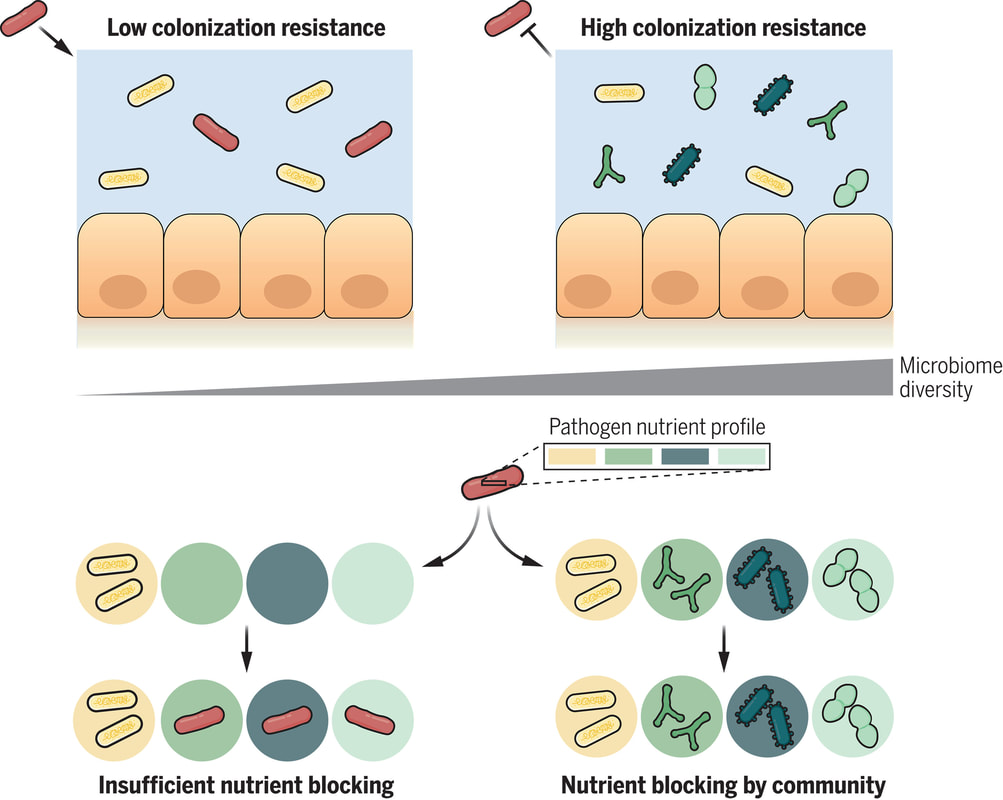
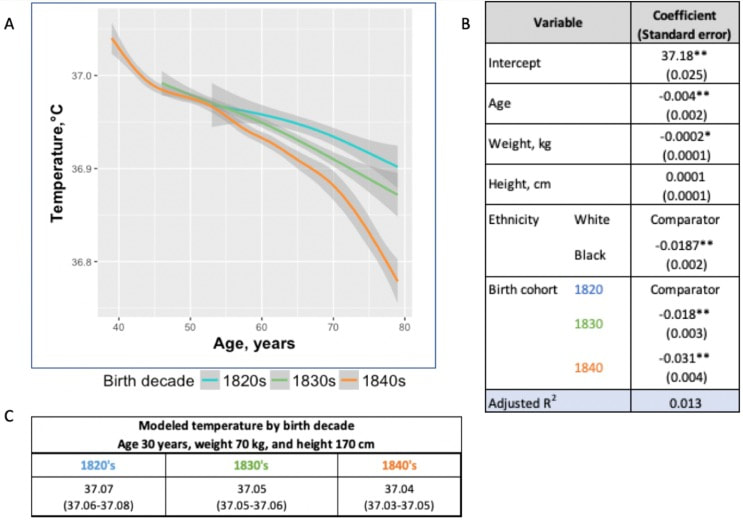
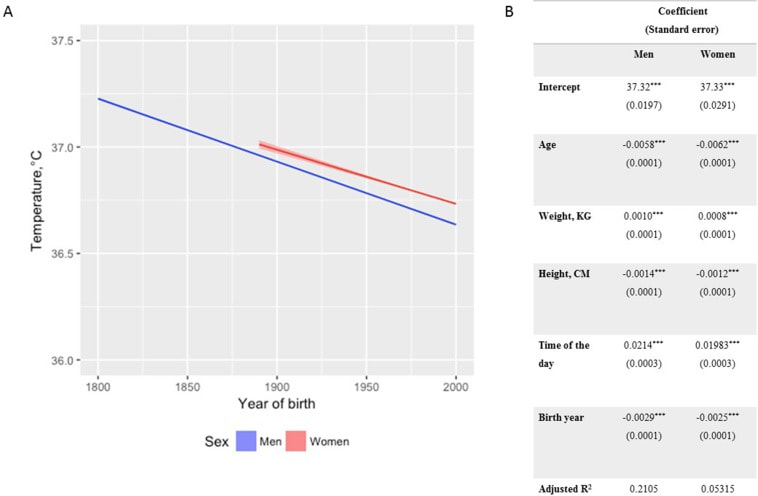
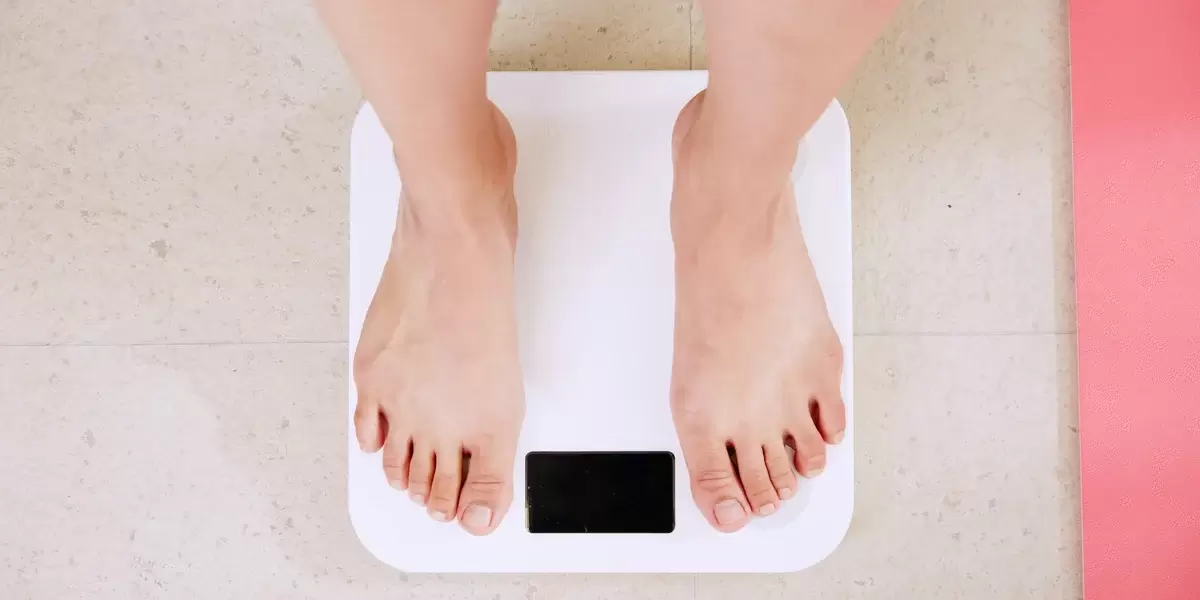
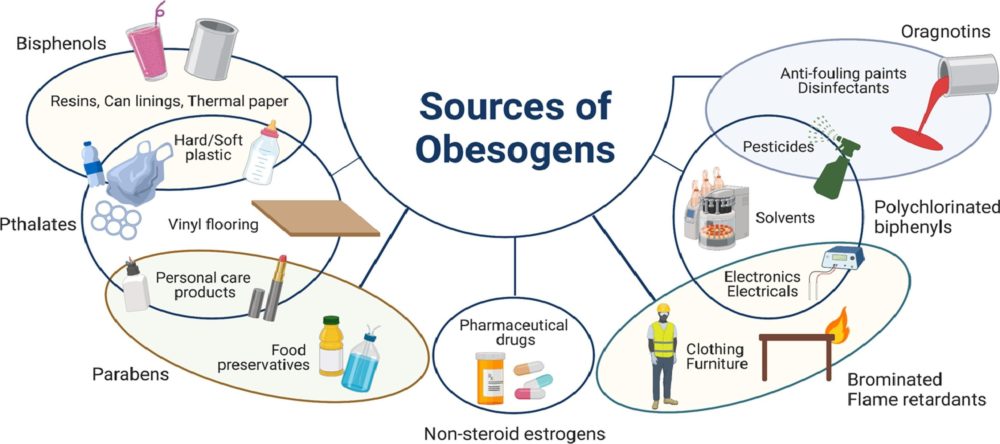

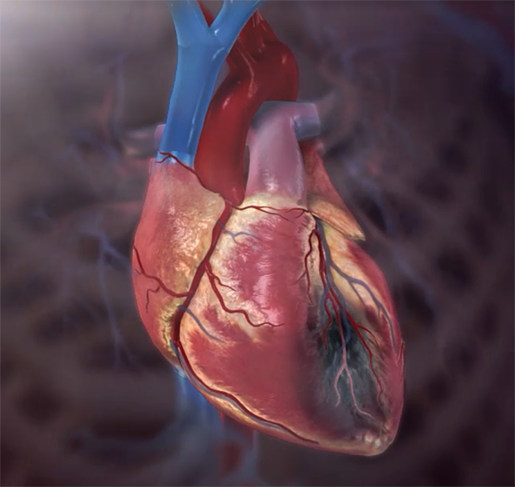
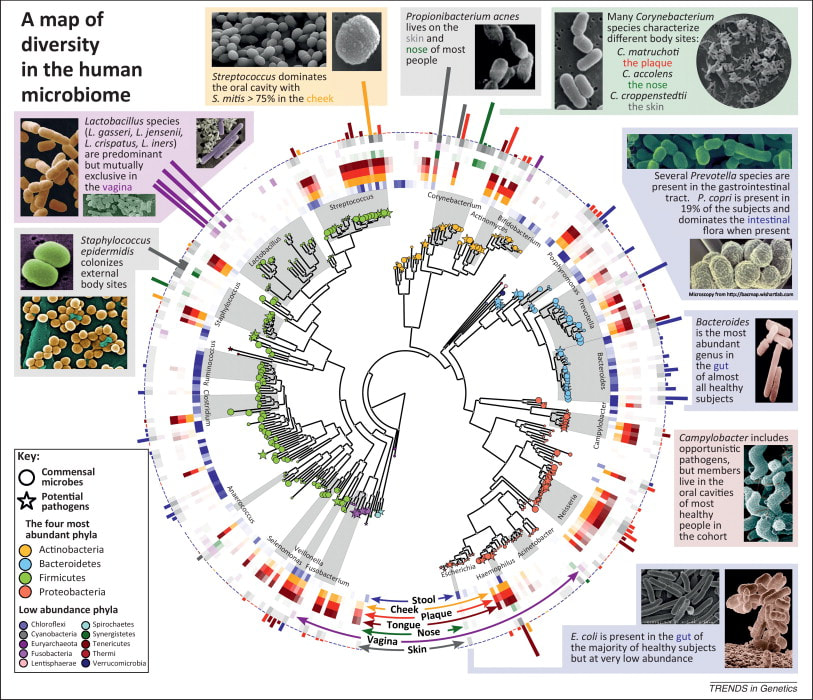
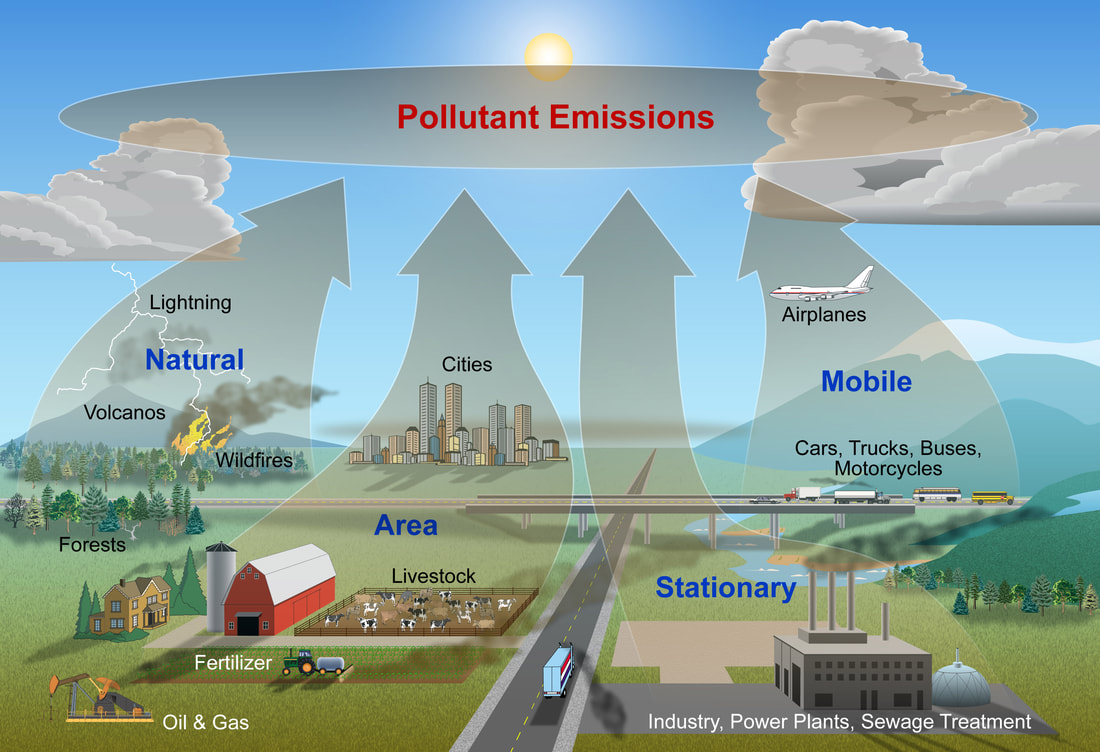
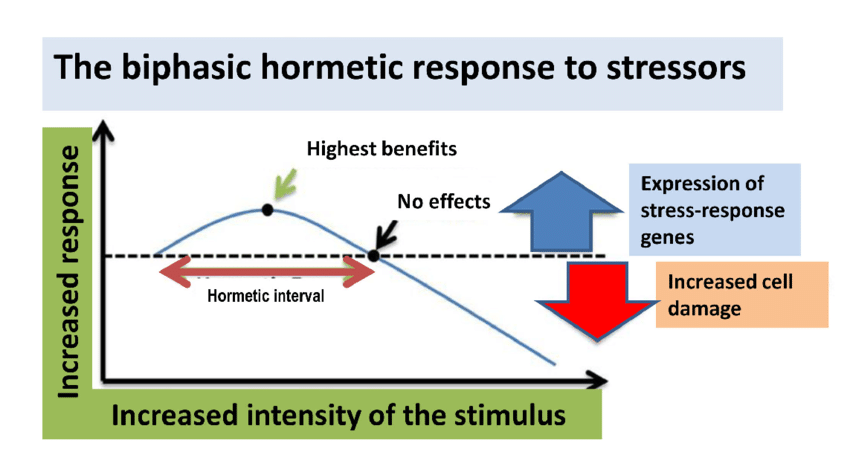
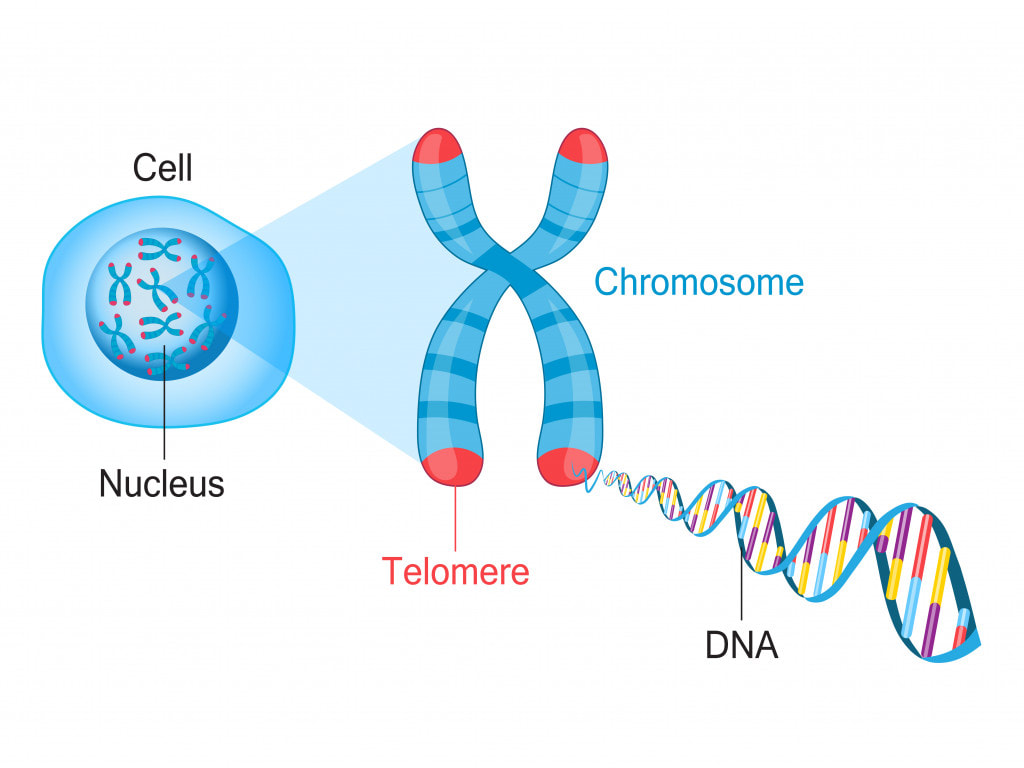

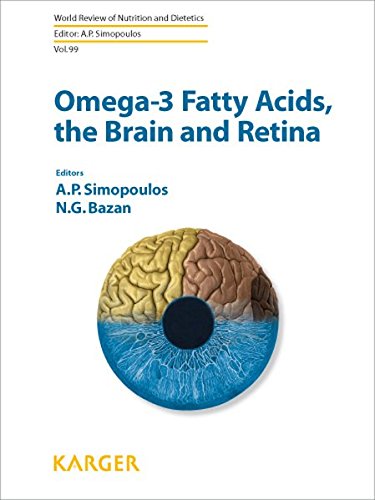
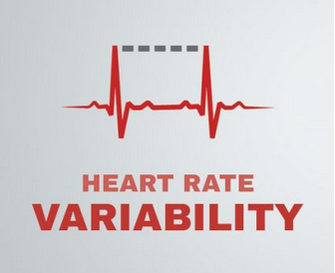
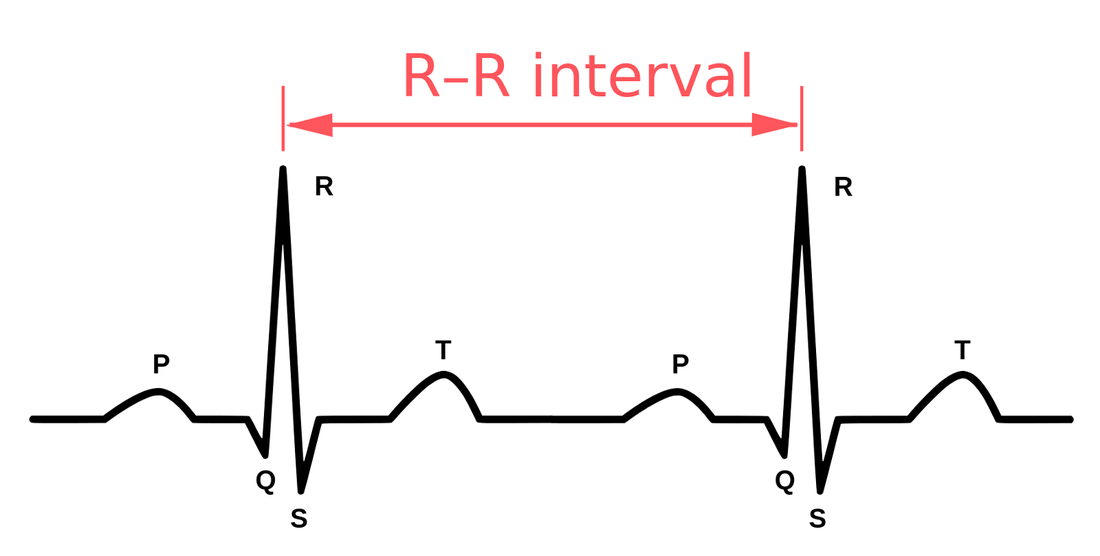
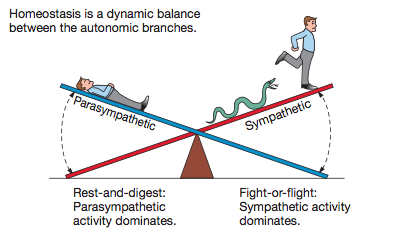
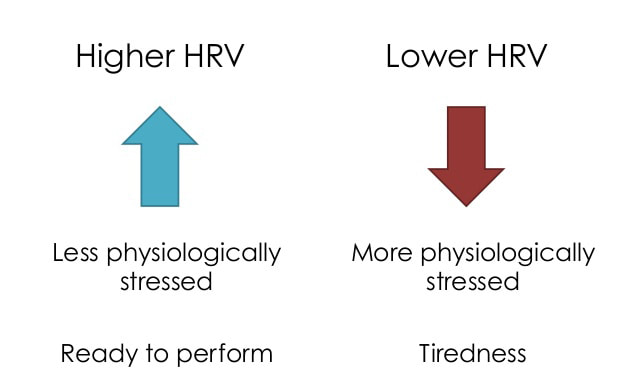
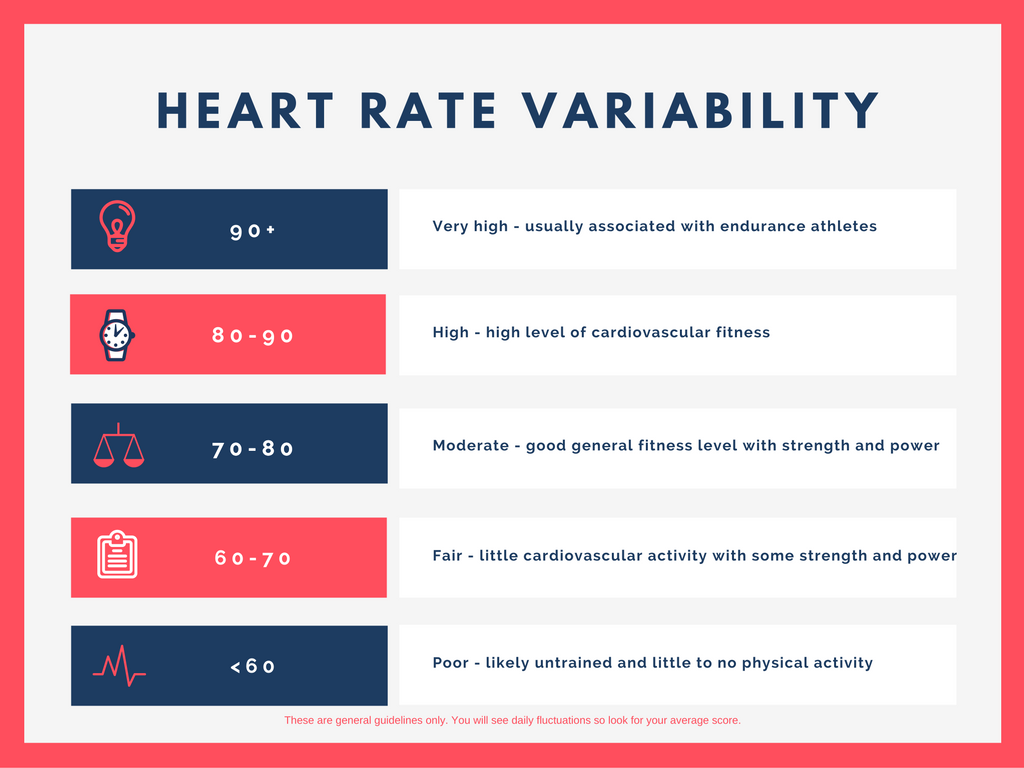
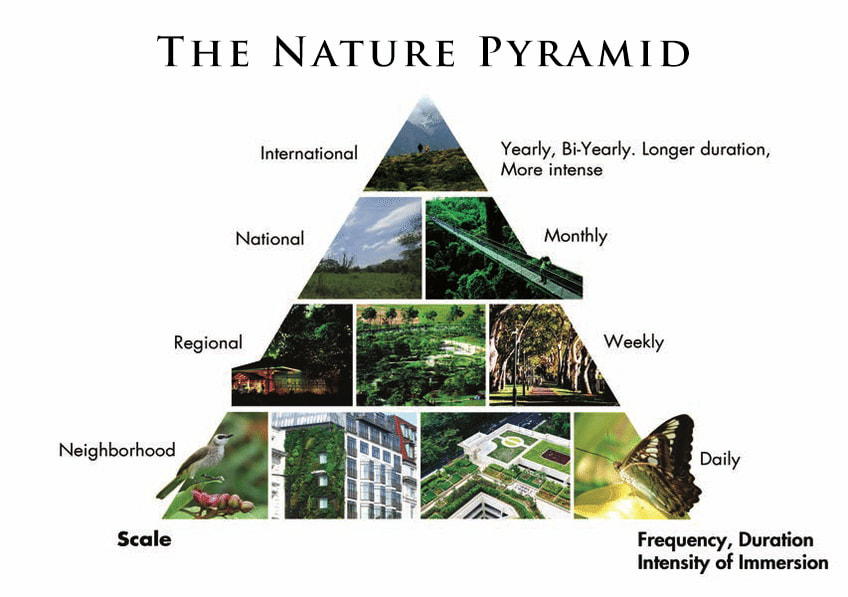



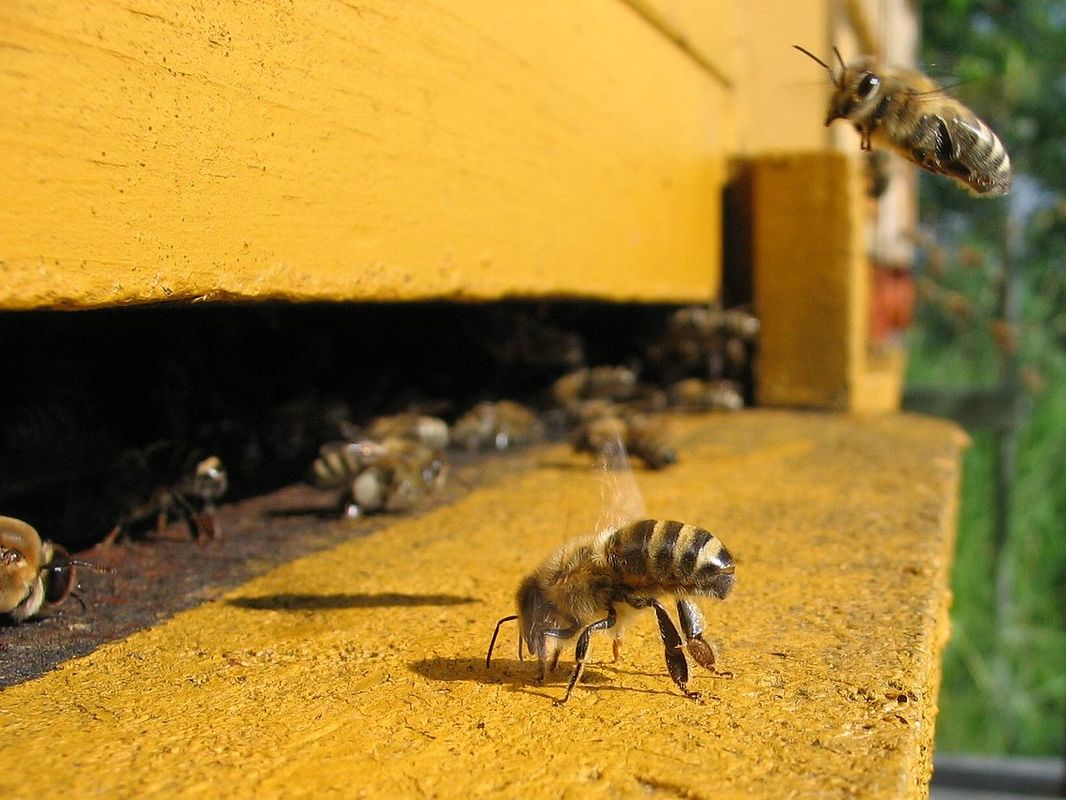
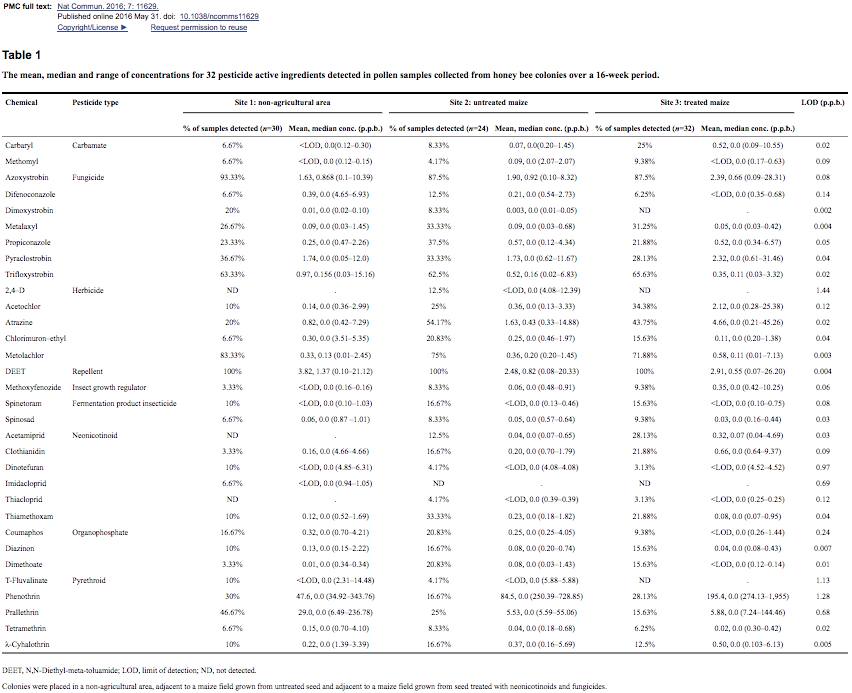

 RSS Feed
RSS Feed

